Text
Hoy hace 4 años que llegué a Tumblr. 🥳

0 notes
Note
hi! i know it must be kinga boring for you recive questions about castiel bc ppl are obsessed ober him for years but like the other person who asked you a few days ago, i follow you (and ply mcl) for like 10 years and ever since day one my fav boy has been tiel. till this day at the age of 22 he's my favorite and my comfort boy so i joke that he's not a fictional character anymore for me and that i know him personally at this point lol
with that being said, i bet you can imagine that over the years i've been elaborating his personality beyond what the game gives us but he's your boy, you created him therefore you know him and your word is canon, so i'd like to ask a few stuff!! nothing too big, dont worry but here we go.
tiel is an amazing songwriter and since he's very emotional not very good at express it (he does it a lot better now that he's an adult 🥹) i bet his lyricism is very deep and poetic so i have this headcanon that he at first wouldn't like taylor swift because obviously lol but then he payed attention to her lyrics and ends up basically being a swiftie since he likes her writing a lot. what you think about that?
and what kind of music crowstorm sings? like there are any bands that you listen and think "hey this would be in a crowstorm album!" (i have a playlist with this name btw lol). im probably wrong on this one but since this is my fav band i like to think that catfish and the bottlemen are the irl crowstorm, musically speaking
and the last one: another thing that gives me so much comfort is the lystiel friendship. not having present parents, being so closed off i know that lysander is such an important presence on tiel's life because he was basically the only close person he had (specially after the debrah fiasco); if lys didnt had taken the farm and went to college and bla bla bla do you think he would still be part of the band with castiel? im not sure if im mixing the canon with a fanfic i read a while ago (lol) but the band was more of a fun thing to lys, right? he liked writing most (i always imagined him getting into a literature degree or something like this). i also like to think that he helps tiel with lyrics at times, even if he's out of the band (in my head the canon is that they are best friends and pretty close till this day, i pretend lys never left our lives just like armin)
anyways sorry for this big ask 😭 i dont even know if you will read it all but if you do, thank you! and dont feel like you have to answer, i know its too much its just that mcl is my hyperfixation till this day like for real, i have a fanfic that i write still and i even plan on making it into a book sometime. except from the main characters (who is my oc) all the characters will be based on the game's ones :)
ilysm take care and stay hydrated!!
Hellow !
Aww thank you so much and for all your love for Castiel ^^
What a long ask, I'll try to answer in order.
Castiel being a swiftie.
No sorry, I don't think he would be. If candy likes her, I'm pretty sure he would try to listen. Also he is an open minded person for sure, so I'm sure he would be curious to listen and study what all the hype is about, it could also help as some sort of far away inspiration, but I don't see him being a fan.

What kind of songs Crowstorm sings
This is hard to answer because my musical knowledge is pretty limited and I'm sure I would miss on lot of potential groups or singers that would fit well.
And it would require too much research time to have a real detailed and clear answer, but I still did check a bit and here is a little list of songs/groups that I think would have a fitting vibe for Crowstorm
City of the dead - Hollywood Undead
The worst in me - bad omens
Paranoid - I prevail Trauma
Just pretend - Bad omens
Ice Nine Kills - A grave mistake
Catfish and the bottlemen sounds nice but I think its a bit too soft for what I imagine for Crowstorm.
What is his voice like
I think something similar to this (not necessarily the song itself, just the voice. )
bonus, I think this song is so so fitting for Castiel's breakup song, I love it.
Dial Tone - Catch your breath
Castiel and Lys friendship.
It was'nt mentionned much in UL/LL because I didnt wish to bring too much drama by mentioning Lys when he was not there for the players, but of course Lys and Cast always kept in touch. It is very clearly mentionned in Lys' AL that they keep in touch, that Lys helps Castiel write songs and Cast also like to come to his farm to have a break and spend time together. You should play it if you havent, you'll have a good chunk of Cast and Lys friendship :)
However yeah I can confirm that Lys would not like to do it serisouly and professionally, but he'll be all the way around to support and help Cast.
213 notes
·
View notes
Photo
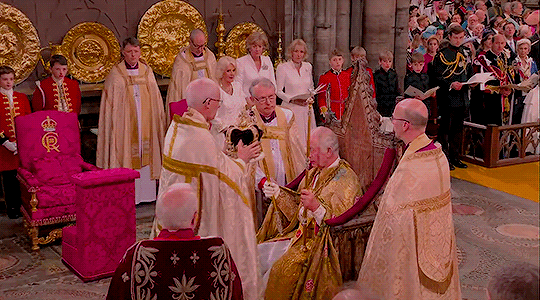




GOD SAVE THE KING!
The Archbishop of Canterbury places St Edward’s Crown on The King’s anointed head. The clergy, congregation and choir all cry ‘God Save The King’.
335 notes
·
View notes
Text


When I saw Daemon’s pic with short hair I just thought I had to because it’s so fitting ???
The pic is traced I just did it and shared for fun :)
783 notes
·
View notes
Photo

Hey… I can’t believe the last time I drew him was 4 years ago… I wanted to do some doddles (maybe another day?), but I finally made a “mini illustration”. I hope you will like it.
Happy birthday Vladimir! 🎉🎂
603 notes
·
View notes
Text
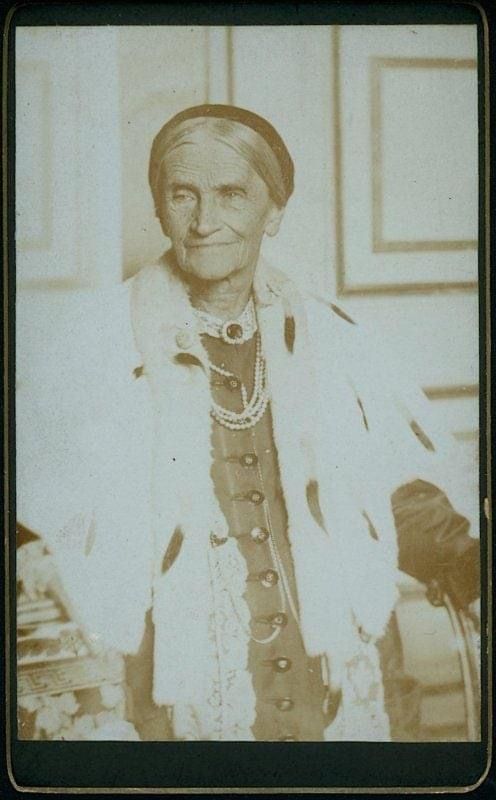
The mother of Empress Sissi,the princess Ludovika of Bavaria.
32 notes
·
View notes
Photo
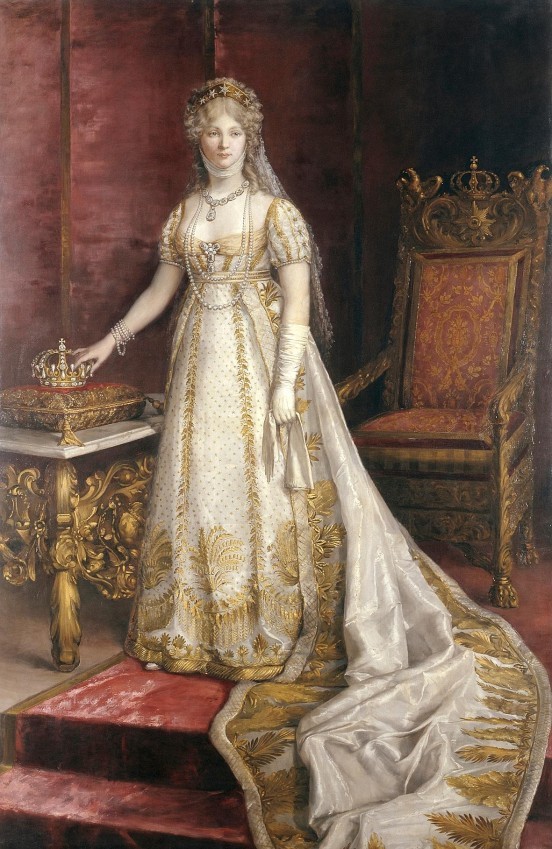
Louise of Mecklenburg-Strelitz, Queen of Prussia, unknown date possibly 1797
546 notes
·
View notes
Photo
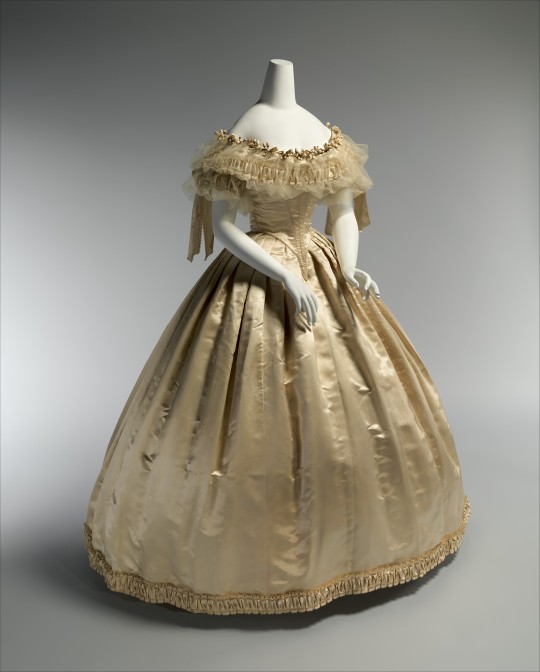
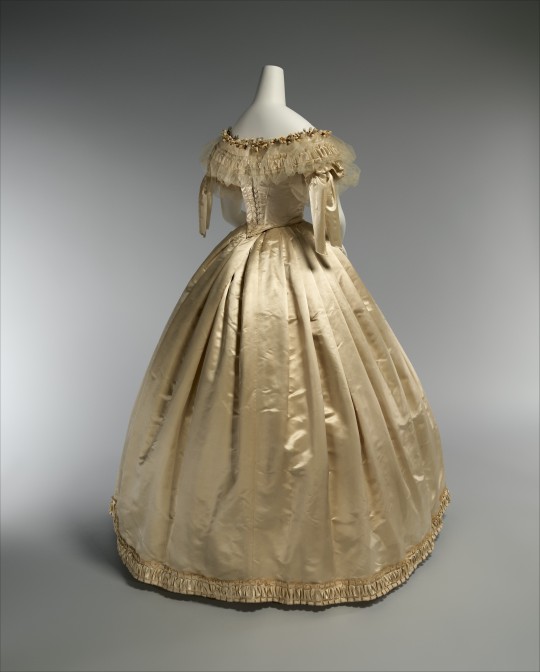
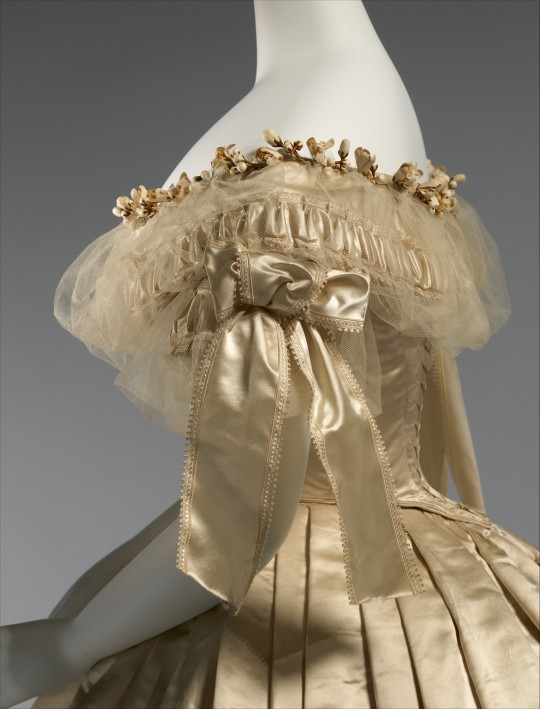
Wedding dress, 1856-59
From the Metropolitan Museum of Art
1K notes
·
View notes
Text
Portrait of Mihrimah Sultan/Mihrimah szultána portréja
Mihrimah was the most influential true-born sultana ever: she had the highest salary; she was a worthy child and descendant of her mother; she was a true charitable person who also had enormous political influence; her father’s partner and counselor for a lifetime; the only sibling ever to be an (unofficial) valide sultan to her brother; the “greatest princess” and matriarch of a dynasty … She was a legendary persona, a unique princess.
Origin and early years
There is an amazing legend about the birth of Mihrimah Sultan. According to this, she was born on 21 March 1522, and for this reason the two mosques - built for her years later, designed by Mimar Sinan - were created so that on the princess’s birthday, when the sun goes down behind the minaret of the Mihrimah Mosque in Edirnekapı, the moon just goes up between the two minarets of the other Mihrimah Mosque. An important part of the legend is that Mimar Sinan once had the opportunity to see the sultana and immediately fell in love for her. For this reason, his works of outstanding beauty and precision, the Mihrimah Mosques, are also seen as the embodiment of platonic love.
The legend is beautiful, but unfortunately not real. Mihrimah’s brother, Mehmed, was born around October 1521, so Mihrimah could not be born in March 1522. Unfortunately, we do not have any evidence to know exactly when she was born. The discrepancies between the Islamic calendar and our calendar used today make it even more difficult to pinpoint. Most likely, in any case, she was born after August 1522, but definitely before 1523.
Although the date of her birth was unknown, the fact of her birth itself was distinctly extraordinary. According to tradition, if a concubine had given birth to a son, she could not return to the sultan’s bed, so basically Hürrem, after giving birth to a son in the autumn of 1521, could no longer have been Sultan Suleiman’s sexual partner. However, Hürrem not only returned to Suleiman’s bed, but became the sultan’s exclusive sexual partner and, after Mihrimah, she gave birth to four more children for the sultan. Hürrem had Mihrimah as her only daughter, while Suleiman already had a daughter, Raziye, who, however, died in an epidemic before Mihrimah was even born.
Mihrimah, as the only living little princess, was certainly not only the apple of her father’s eye, but the light of the whole harem. She spent most of her time with her mother and governess, but they certainly also had regular contact with her family-centric grandmother, Hafsa. It was probably by this time that she began to learn the basics of embroidery from her mother. Hürrem was particularly talented in embroidery, her works being so outstanding that she sometimes sent them as gifts to the leaders of other dynasties. And Mihrimah was reportedly a great student to her mother, who mastered the technique well. In addition to her mother, her father also played an important role in her childhood. Suleiman often visited his family at the Old Palace, and from 1534 they moved together at the Topkapi Palace. From then on, Mihrimah could spend even more time near her father, whom she had regularly mesmerized with her mere existence.

Marriage and husband candidates
The marriage of imperial princesses has always been an important political tool. However, Suleiman did not make much use of this opportunity. His sisters were even married off by their father, Selim I, and after their widowhood he did not force them to marry again. He had a big amount of respect and love for the female members of his family, so he was expected to treat his daughter the same way. Suleiman, however, not only did not marry off his sisters again and again because of his kind nature, but fortunately he did not need allies what marriages could have given him. The empire was rising, the nation had never been so strong, and everyone loved him as a sultan, so simply he did not need allies by marriages.
Ttherefore, there was no particularly urgent need to marry off Mihrimah and it was not necessary to choose the future husband from among the senior and influental pashas. Thus, Suleiman could easily search for a statesman he liked, even from a lower position. Suleiman wanted a reliable, faithful husband for Mihrimah, while Hürrem would prefer a young and handsome husband. Hürrem recommended the Egyptian beylerbey to Suleiman, who was notoriously handsome and young. However, the sultan did not like the man, as he had a reputation as a womanizer, and it was rumoured that he had syphilis. Of course, many such rumors spread unfoundedly, but Suleiman did not investigate the Egyptian beylerbey, he simply rejected the idea. He had other plans. He singled out a particularly humble and trustworthy guy, who he had long known for, to Mihrimah’s side. His choosen one, Rüstem, was his personal servant for almost 10 years from 1526, after which he served as a governor for the sultan in various provinces of the empire. They were very close to each other, and Rüstem also taught the brothers of Mihrimah for a while, so the princes were well known by him. In addition, it is also likely that Mihrimah also had the opportunity to meet the pasha before, as he may have been in the same place as the sultana because of his proximity to the sultan. Eventually, of course, Hürrem was also accepted Suleiman’s husband candidate and the only question was whether Mihrimah would accept him.
Rüstem was roughly seventeen or twenty years older than Mihrimah, one of the ambassadors reported that he was not a particularly handsome guy, but was short and red-faced. So he was clearly not a teenage girl’s dream, even if most sultanas had to marry much older pashas than Rüstem. Yet Mihrimah agreed to the marriage. The question arises, could she have said no at all? As a matter of fact, probably yes. She was Suleiman’s favorite child, apple of his eyes, if she would had a personal and deep resentments towards Rüstem, she could have said no. But she didn’t. Mihrimah was a very smart woman who stood by her mother’s side since her childhood and who probably tryed to help her. She was obviously aware of the law of fratricide, that they had to do everything they could to remove Mustafa — his eldest half-brother — from their way, and with this, saving the lives of her blood-brothers. And Rüstem was a great opportunity to do so, as he had known and loved the sons of Hürrem since childhood, thus there was no question that he would side with Hürrem and Mihrimah in this bloody war. So for the sake of her brother’s future, Mihrimah said yes to marriage.

Marriage and relationship with her husband
The wedding took place in 1539. Rüstem could have been around 35 at the time, while Mihrimah was 17 years old. The circumcision ceremony of Bayezid and Cihangir was held at the same time as the wedding of Mihrimah. The double ceremony eventually lasted for 15 days, during which the entire population of Istanbul shared the joy of the Sultan’s family during the festivals and feasts. Due to his position, Rüstem lived in Istanbul, so Mihrimah did not have to move far away from her parents either. That’s why Rüstem was a great choice, as neither Suleiman nor Hürrem wanted to lose their daughter. And Mihrimah, with her strong will, would certainly have manage to stay in the capital as well.
There is no question that it was not a love marriage, however, the relationship was by no means as bad as it was portrayed in the popular series. Mihrimah could at least marry a man he knew, who was a committed supporter of her brothers and was extremely loyal to her father, the Sultan. Their marriage was crowned in 1541 by the birth of their first child. Ayşe Hümaşah was the first child of Rüstem, the first grandson of Hürrem. By now, Suleiman was grandfather of at least one, as Prince Mustafa had a six-year-old daughter, but later Ayşe Hümaşah became his favorite grandchild. Mihrimah and Rüstem later — it is not known exactly when — had another child, a son, Osman. This suggests that they may have had a relatively balanced relationship, as the sultanas could have refused to have sexual intercourse with their husbands. Their fair relationship is also indicated by the fact that they had many charitable projects managed together.
The marriage of the two ended in 1561, with the death of Rüstem Pasha. However, their mutual respect is shown in the will of Rüstem. He left everything to his wife and daughter: the management of his charities was largely given to his daughter, but Mihrimah was given much similar tasks also. In addition, it was Mihrimah who completed the Rüstem Pasha Mosque, which was only half-finished at the time of Rüstem’s death.
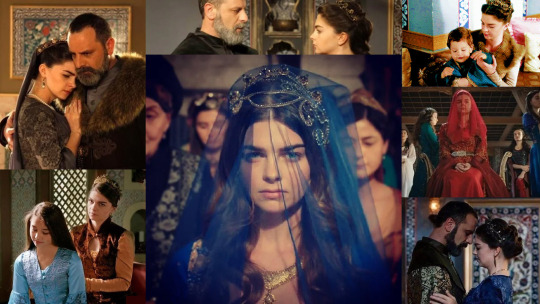
Her intrigues
According to legend, Mihrimah, with the support of her mother Hürrem, wanted to make Rüstem the next Grand Vizier, which plan was finally successfully completed. However, it would be wrong to think that only the actions of the two women led to the appointment of Rüstem. Rüstem had been the sultan’s confidential man for twenty years so far, Suleiman found him worthy to be the husband of his only daughter, it was clear that the sultan himself wanted to give this position to Rüstem once. However, Mihrimah and Hürrem were not satisfied with this, but wanted Rüstem to enjoy the prerogatives that Ibrahim had previously enjoyed. The sultan, on the other hand, sharply refrained from letting anyone as close to him as he had done with Ibrahim.
One of the important cornerstones of Mihrimah and Rustem’s marriage was the multitude of common intrigues. Mihrimah was very active politically, with her husband she often was able to uccessfully convince the sultan. This was the case when, in 1542, Suleiman wanted to take the infant Hungarian king and his mother, Queen Isabella, to Istanbul as political prisoners. However, being a smart woman, Izabella knew she could get help from the sultan’s daughter and wife. So she complained to Mihrimah and Hürrem about how young she was widowed, how she was left alone with her son and now even the sultan want to deprived her and her son of their throne. In addition, of course, she also sent very valuable gifts to Mihrimah and her husband. She must have mentioned her descent in her letter as well. Izabella was the daughter of the King of Poland, from whose country Hürrem Sultan came from. And this was an important link between Hürrem, Mihrimah and Izabella. Either way, Izabella persuaded Hürrem and Mihrimah, who together with Rüstem, easily persuaded the Sultan to support Izabella and her son instead of bringing them to Istanbul as prisoners. Thus it happened that János Zsigmond Szapolyai became the next king of Hungary.
However, the main task of the couple was to support the brothers of Mihrimah, especially Prince Mehmed. By 1543 it was quite clear that they wanted Mehmed to ascend the throne and the trio had done all they could for this aim. However, the early death of the prince made their situation more difficult. For a time they did not care which prince of theirs should be the next sultan, they worked only and exclusively to get rid of Prince Mustafa. It took another ten years before they were finally successful and Mustafa was executed by the Sultan. Exactly how much Mihrimah was involved in this process and what she did is unknown, as there is no evidence at all to prove the guilt of Hürrem or Mihrimah. But nonetheless, it would be naive to think that Mihrimah, who was the copy of her mother both in body and soul, would not have been involved in the struggle of her beloved mother and husband.
It seems that after Mustafa’s death, the trio voted for Prince Bayezid, while the Sultan himself favored Selim. Perhaps that is why Bayezid was chosen: to balance the situation of the two princes. However, Bayezid’s nature resembled a timed bomb, so they were afraid that if he was not supported, he would raise the Sultan’s anger with a reckless act. Thus, the fact that Bayezid was supported does not clearly mean that they also wanted him to be the one sitting on the throne.

Loss of her mother
1558 brought a drastic change in Mihrimah’s life. Hürrem Sultan died. Mihrimah and her mother were especially close to each other, of the known mother-daughter relationships, the two of them had the closest. Mihrimah visited Hürrem every day at Topkapi Palace, spending more time there than in her own palace. She also regularly accompanied her mother on her travels and visited her siblings together. Thus, the loss of Hürrem was certainly a great pain for Mihrimah. However, Hürrem, at the time of her death, handed over her responsibilities to her daughter, who thus had no time to mourn, she had to take immediate action to continue her mother’s path. And this meant nothing more than the support of the Sultan and the protection of Prince Bayezid.
However, Mihrimah could not influence Bayezid like their mother, so she could not meke the prince to wait patiently and not annoy the sultan. Bayezid soon revolted against the sultan, and for this, according to several sources, Bayezid asked Mihrimah for money. And Mihrimah gave it to him. When the sultan realized this, he immediately questioned his daughter, who proudly replied that her mother asked her to do anything for Bayezid on her deathbed, so she was not guilty of anything. We don’t know how Suleiman reacted, but their relationship seems to have deteriorated for a while.
However, Mihrimah’s support was not enough either, Bayezid failed in the decisive battle of the rebellion he fought, lost the battle and was forced to flee the battlefield. By this time, both Mihrimah and Rustem were helpless. And Rustem soon lost his life, so there was no one left to save Bayezid and his sons from execution. Bayezid was executed in 1562, and a few months later the sultan organized a huge wedding to marry off the daughters of the heir, Prince Selim, one of the daughters of the late Prince Mustafa, and the daughter of Bayezid who was at the appropriate age for marriage. Mihrimah faced her father again because of the wedding. Most sources say that it was only during the wedding preparations that Mihrimah learned that Bayezid had been executed, as by then the news had not reached Istanbul and Suleiman had ordered complete secrecy. Mihrimah, shattered and enraged by grief, found it deeply outrageous that a ceremony was being held in the empire shortly after his brother was executed. Therefore, she tried in every way possible to make the ceremony impossible, for example by forbidding anyone in the harem to have fun and show happiness. Since Mihrimah lived in the Old Palace since the death of Rustem and she probably led the harem also, her orders were accepted and there was no amusement in the harem. According to reports from the ambassadors, Suleiman was shattered and disappointed. However, upon hearing the news, Selim allegedly said, angrily, that he never loved his sister, nor her husband, nor their mother, for choosing Bayezid instead. However, the reliability of this news is in doubt, for the ambassador who wrote it deeply despised Selim.
Her relationship with her father seems to have settled over time, however, since in 1565, for example, Mihrimah persuaded her father to initiate a campaign against Malta, and she herself offered her own treasury, teasing to exhibit 400 galleys to the army. Thus, although there is no doubt that the execution of Bayezid left its mark on their relationship forever. It was probably at the end of his life that Suleiman could have his only daughter with him again.
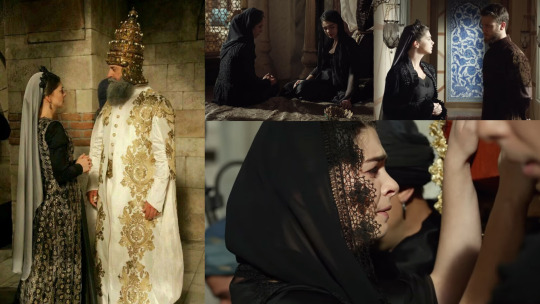
The new era
Mihrimah lost her father in 1566 and a new world began for her with the reign of her younger brother, Selim. The relationship between the two was not the best, as Mihrimah was always on Bayezid’s side, but by this time only the two of them were alive from the family, so they chose togetherness instead of hatred. First, Mihrimah extended a helping hand to Selim when he was blackmailed and humiliated by the Janissaries before his accession to the throne. The Janissaries wanted to get their ascension fee immediately when Selim had not even ascended the throne. At that time, Selim did not have access to the imperial treasury, and it would have been too long to bring money from his own province, so Mihrimah paid the soldier’s allowance for Selim to occupy the throne at all without riots. Selim did not remain ungrateful, for he made his sister the head of the Old Palace harem, and thus a de facto valide sultan.
During Selim’s reign, she basically stayed in the background and spent her time on charity, construction projects instead of politics. Mihrimah has supported many construction projects, but the most famous are undoubtedly the two Mihrimah mosques, which are the most beautiful works of the imperial architect Mimar Sinan. She also supported Nurbanu’s efforts to free two captured Turkish women from the French. Together, with Nurbanu’s daughters and her own daughter, they finally persuaded the Queen of France to send the women back home. Based on this, we can think that she had a good relationship with Nurbanu. There is no direct evidence of a relationship between the two women, probably it was a respectful one. However, Mihrimah’s daughter supported Nurbanu’s opponent, Safiye Haseki Sultan, which also raises the possibility that Mihrimah herself favored Safiye over Nurbanu.
The twilight of her life
Selim died in 1574 and his son Murad succeeded him to the throne. The relationship between Murad and Mihrimah is not known, but presumably a spike could have remained in Murad for Mihrimah supporting Bayezid. That is why there are those who suspect that Mihrimah lost all power during Murad’s reign. In fact, this is unlikely, as Murad gave Mihrimah a salary as high as no other imperial princess has ever received in a similar situation. Mihrimah may have decided to retire by herself. With the death of Selim, she was left alone in the family, having so far lost four brothers, both parents, nephews, husband and her own son. Broken with so much pain, she probably no longer felt the urge to care with politics. Her daughter Ayşe Hümaşah, who was very active politically, continued her path.
Mihrimah died on 25 January 1578, in the Old Palace. Sultan Murad decided to bury Mihrimah next to her father, breaking the tradition that the sultans rested alone in their turbe. However, with her death, her bloodline did not disappear, as her daughter, her descendants, could be traced back to the 20th century, but presumably other family members still live today. They are the Mihrumazadelers.

Used sources: L. Peirce - Empress of the east; L. Peirce - The imperial harem; Y. Öztuna - Kanuni Sultan Süleyman; N. Sakaoğlu - Bu Mülkün Kadın Sultanları
* * *
Mihrimah volt a valaha élt legbefolyásosabb birodalmi szultána: övé volt a legmagasabb fizetés; méltó gyermeke és utódja volt édesanyjának; igazi jótékony személy volt, hatalmas politikai befolyással; apja társa és tanácsadója egy életen át; az egyetlen valaha volt testvér, aki nem hivatalos valide szultána lehetett öccse mellett; a “legnagyobb hercegnő” és egy dinasztia matriarchája… Egy legendás személyiség volt, soha hozzá fogható nem élt.
Származása és korai évei
Mihrimah szultána születését egy igen érdekes legenda övezi. Eszerint 1522 március 21-én született, és ezen okból kifolyólag az évekkel később neki építtetett két mecsetet Mimar Sinan, birodalmi főépítész úgy tervezte meg, hogy a hercegnő születésnapján, amikor a nap az Edirnekapıban található Mihrimah-mecset minaretje mögött lemegy, a hold az üsküdari Mihrimah-mecset két tornya között éppen akkor keljen fel. A legenda fontos része az is, hogy Mimar Sinannak egyszer alkalma nyílt meglesni a szultánát és azonnal beleszeretett. Éppen ezért, a kiemelkedő szépségű és precizitású munkáit, a Mihrimah-mecseteket a plátói szerelem megtestesüléseként is tekintik.
A legenda gyönyörű, azonban sajnos nem valós. Mihrimah bátyja, Mehmed 1521 októbere körül született, így Mihrimah matematikailag nem születhetett 1522 márciusában. Sajnos nem áll rendelkezésünkre semmi olyan bizonyíték, amely alátámasztaná, hogy pontosan mikor született a szultána. Az iszlám naptár és a ma használt naptárunk közötti eltérések tovább nehezítik a pontos meghatározást. A legvalószínűbb mindenesetre, hogy 1522 augusztusa, szeptembere körül születhetett leghamarabb, de mindenképpen 1523 előtt.
Születési ideje bár nem ismert, születésének ténye maga kifejezetten rendkívüli volt. A tradíciók szerint ha egy ágyas fiút szült, nem térhetett vissza a szultán ágyába, így elméletileg Hürrem, miután 1521 őszén fiút szült, nem lehetett volna tovább Szulejmán szultán szexuális partnere. Hürrem azonban nem csak visszatért Szulejmán ágyába, de a szultán kizárólagos szexuális partnere lett és Mihrimah után további négy gyermeket szült a szultánnak. Hürremnek Mihrimah volt az egyetlen leánygyermeke, míg Szulejmánnak volt már egy kislánya, Raziye, aki azonban Mihrimah születése előtt életét vesztette egy járvány során.
Mihrimah, mint az egyetlen élő kishercegnő minden bizonnyal nem csak édesapja, de az egész hárem szeme fénye volt. Ideje nagyrészét édesanyjával és dajkájával töltötte, ám emellett minden bizonnyal a családcentrikus nagyanyjával is rendszeres kapcsolatban álltak. Valószínűleg már ekkor elkezdte eltanulni édesanyjától a hímzés alapjait. Hürrem ugyanis különösen tehtséges volt a hímzésben, munkái olyan kiemelkedő szépségűek voltak, hogy előfordult, hogy más dinasztia fejeinek küldte őket ajándékba. Mihrimah pedig a beszámolók szerint remek diákja volt anyjának, aki remekül elsajátította a technikát. Édesanyja mellett, apja is fontos szerepet töltött be már gyermekkorában. Szulejmán gyakran látogatta családját a Régi Palotában, majd 1534-től összeköltöztek a Topkapi Palotában. Innentől kezdve Mihrimah még több időt tölthetett édesapja közelében, akit már puszta létezésével is rendszeresen levett a lábáról.

Kiházasítása és a férjjelöltek
A birodalmi hercegnők házassága mindig fontos politikai eszköz volt. Szulejmán azonban nem különösebben élt ezzel a lehetőséggel. Lánytestvéreit is még apjuk, I. Szelim házasította ki, megözvegyülésük után ő pedig nem forszírozta újra házasodásukat. Meglehetősen nagy tisztelettel és szeretettel viseltetett családja nőtagjai iránt, így várható volt, hogy egyetlen kislányával szemben is a rá jellemző alapossággal fog eljárni. Szulejmán azonban nem csak kedves természete miatt nem használta ki nőrokonait, hanem szerencséjére nem volt szüksége szövetségesekre, melyeket a házasságok jeenthettek volna neki, hiszen a birodalom szárnyalt, sose volt még ilyen erős a nemzet és őt magát is mindenki szerette.
Ilyen háttérrel tehát nem volt kifejezetten sürgős Mihrimah kiházasítása és nem volt szükséges magas beosztású pasák közül választani a férjjelöltet. Így Szulejmán nyugodtan kereshetett neki tetsző államférfit, akár alacsonyabb pozícióból is. Szulejmán megbízható, hűséges férjet akart Mihrimah számára, ezzel szemben Hürrem inkább fiatal és jóképű férjet. Hürrem az egyiptomi beglerbéget ajánlotta Szulejmánnak, aki köztudottan jóképű és ifjú volt. A szultánnak azonban nem volt kedvére a férfi, hiszen csapodár természet hírében állt, ráadásul azt terjesztették róla, hogy szifilisze van. Természetesen sok ilyen pletyka terjengett alaptalanul is, Szulejmán azonban nem vizsgáltatta ki az egyiptomi beglerbéget, egyszerűen csak elvetette az ötletet. Neki ugyanis más tervei voltak. Egy általa régóta ismert, különösen szerény és megbízható pasát szemelt ki Mihrimah oldalára. Kiszemeltje, Rüsztem pasa 1526-tól majdnem 10 évig a személyes szolgálója volt, utána pedig feltörekvő pasaként szolgálta a szultánt a birodalom különböző tartományaiban. Igen közel álltak egymáshoz, valamint Rüsztem Mihrimah testvéreit is oktatta egy ideig, így a hercegek is jól ismerték. Emellett az is valószínű, hogy Mihrimahnak is volt alkalma találkozni a pasával, hiszen az kifejezetten sok helyen ott lehetett a szultánhoz való közelsége miatt, ahol lehetősége volt látni a szultánát. Végül természetesen Hürrem is kénytelen volt elfogadni Szulejmán férjjelöltjét és már csak az volt a kérdés, hogy Mihrimah elfogadja e.
Rüsztem nagyjából tizenhét-húsz évvel volt idősebb Mihrimahnál, az egyik követ beszámolója szerint nem kifejezetten jóképű, alacsony és vörös képű férfi volt. Egyértelműen nem egy kamaszlány vágyálma volt tehát, még akkor sem ha a legtöbb szultána jóval idősebb férjet kapott maga mellé. Mihrimah mégis beleegyezett a házasságba. Felmerül a kérdés, hogy mondhatott volna egyáltalán nemet? Ami azt illeti valószínűleg igen. Ő volt Szulejmán kedvenc gyermeke, szemefénye, ha különös és mély ellenérzései lettek volna Rüsztem irányába, mondhatott volna nemet. Ám ő nem tette. Mihrimah igen okos nő volt, aki gyermekkorától kezdve édesanyja oldalán állt és valószínűleg próbálta őt segíteni. Nyilvánvalóan tisztában volt a testvérgyilkosság törvényével, azzal, hogy mindent meg kell tenniük, hogy Musztafát - legidősebb féltestvérét - eltávolítsák az útból, ezzel megmentve édestestvérei életét. Rüsztem pedig nagyszerű lehetőség volt erre, hiszen gyermekkoruktól kezdve ismerte és szerette Hürrem fiait, nem volt kérdéses, hogy Hürrem és Mihrimah oldalára fog állni ebben a vérremenő harcban. Így tehát testvérei jövője érdekében Mihrimah igent mondott a házasságra.

Házassága és viszonya férjével
Az esküvőre végül 1539-ben került sor. Rüsztem 35 körül lehetett ekkor, míg Mihrimah 17 éves volt. Hogy minél nagyobb ünnepséget kerekítsenek belőle, az esküvővel egy időben megtartották Bayezid és Cihangir herceg körülmetélési szertartását is. A dupla-ünnepség végül 15 napig tartott, melynek során Isztambul teljes lakossága osztozott a szultáni család örömében a fesztiválok és lakomák során. Rüsztem pozíciójának köszönhetően Isztambulban élt, így Mihrimahnak sem kellett szüleitől távol költözni. Rüsztem ezért is volt nagyszerű választás, hiszen sem Szulejmán, sem Hürrem nem akarta lányát elveszíteni. Mihrimah pedig erős akaratával minden bizonnyal szintén azon ügyködött volna, hogy a fővárosban maradhasson.
Nem kérdés, hogy nem szerelmi házasság köttetett, azonban a viszony korántsem volt olyan rossz, ahogy például a népszerű sorozatban ábrázolták. Mihrimah legalább olyan emberhez mehetett feleségül, akit ismert, aki elkötelezett támogatója volt testvéreinek és végletekig hűséges volt apjához, a szultánhoz. Házasságukat első gyermekük születése koronázta meg 1541-ben. Ayşe Hümaşah volt Rüsztem első gyermeke, Hürrem első unokája. Szulejmán eddigre már legalább egyszeres nagyapa volt, Musztafa hercegnek ugyanis volt már egy hat éves kislánya, azonban mégis később Ayşe Hümaşah lett kedvenc unokája. Mihrimah és Rüsztem kapcsolatából később - nem pontosan ismert mikor - született egy fiú is, Osman. Ez azt sugallja, hogy viszonylag kiegyensúlyozott kapcsolatuk lehetett, hiszen a szultánák megtagadhatták a szexuális együttlétet férjükkel. Erre utal az a tény is, hogy nagyon sok jótékony projektet közösen irányítottak.
Kettejük házassága 1561-ben, Rüsztem Pasa halálával ért véget. Kölcsönös tiszteletüket mutatja azonban Rüsztem végrendelete. Mindenét feleségére és lányára hagyta: jótékonysági szervezeteinek irányítását nagyrészt lányára, ám Mihrimahnak is jócskán jutott hasonló feladat. Emellett Mihrimah volt az, aki befejezte Rüsztem Pasa mecsetjét, amely Rüsztem halálakor még csak félkész állapotban volt.

Az intrikus szultána
A legendák szerint Mihrimah, édesanyja Hürrem támogatásával szerette volna elérni, hogy Rüsztem legyen a következő nagyvezír, mely tervüket végül sikerrel véghezvitték. Azonban téves lenne azt gondolni, hogy csak a két nő ténykedése vezetett Rüsztem kinevezéséhez. Rüsztem eddigre húsz éve volt a szultán bizalmas embere, Szulejmán méltónak találta őt egyetlen lánya kezére, egyértelmű volt, hogy a szultán maga is ezt a pozíciót egyszer Rüsztemnek akarta adni. Mihrimah és Hürrem azonban ezzel nem elégedtek meg, hanem olyan előjogokat akartak Rüsztemnek, amelyek korábban Ibrahim Pasát is megillették. A szultán viszont élesen elzárkózott attól, hogy bárkit újra olyan közel engedjen magához, mint ahogyan Ibrahimmal tette.
Mihrimah és Rüsztem házasságának egyik fontos alapköve volt a közös intrikák sokasága. Mihrimah politikailag igen aktív volt, sokszor férjével közösen sikerrel győzték meg a szultánt egy egy ügy kapcsán. Ilyen volt, amikor 1542-ben Szulejmán szerette volna Isztambulba vitetni politikai fogolyként a csecsemő magyar királyt és édesanyját, Izabella királynét. Izabella azonban okos nő lévén tudta, hogy segítséget kaphat a szultán lányától és nejétől. Elpanaszolta hát helyzetét Mihrimahnak és Hürremnek is: hogy milyen ifjan megözvegyült, egyedül maradt fiával és most még trónjától, jogától is megfosztanák. Emellett pedig természetesen igen értékes ajándékokat is küldött Mihrimah szultána és férje számára. Minden bizonnyal Izabella levelében kijátszotta származását is. Izabella ugyanis a lengyel király lánya volt, azé a lengyel királyé, akinek országából Hürrem szultána származott. Ez pedig fontos kapocs volt Hürrem, Mihrimah és Izabella között. Akárhogyan is, Izabella meggyőzte Hürremet és Mihrimaht is, akik Rüsztemmel karöltve könnyedén rávették a szultánt, hogy támogassa Izabellát és annak fiát, ahelyett, hogy fogolyként Isztambulba hozatná őket. Így lett hát, hogy Szapolyai János Zsigmond lett a Magyar Királyság következő királya.
A házaspár fő feladata azonban Mihrimah testvéreinek támogatása volt, különösen Mehmed hercegé. 1543-ig teljesen egyértelmű volt, hogy Mehmed herceget szerették volna trónra emelni és a trió ehhez mindent elkövetett. A herceg korai halála azonban megnehezítette helyzetüket. Egy ideig nem foglalkoztak azzal, hogy melyik herceg legyen az új kiszemeltjük, csak és kizárólag Musztafa herceg ellehetetlenítésén dolgoztak. Még tíz évbe telt, mire végül sikerrel jártak és Musztafát kivégeztette a szultán. Az, hogy Mihrimah pontosan mennyire és hogyan vett részt ebben a folyamatban, nem ismert, hiszen nincsenek egyáltalán olyan bizonyítékok, amelyek Hürrem vagy Mihrimah bűnösségét bizonyítanák. Ám ettől függetlenül naivitás lenne azt gondolnunk, hogy Mihrimah, aki anyja kiköpött mása volt testben és lélekben is, nem vett volna részt szeretett anyja és férje harcában.
Olybá tűnik, hogy Musztafa halála után a trió Bayezid herceg mellett tette le a voksát, míg a szultán maga Szelimet favorizálta. Talán épp ezért választották Bayezidet, hogy kiegyenlített lehessen a két herceg helyzete. Mindemellett Bayezid természete egy időzített bombához hasonlított, így félő volt, ha nem támogatják, a szultán haragját fogja kivívni egy meggondolatlan cselekedettel. Így az, hogy Bayezidet támogatták, nem jelenti egyértelműen azt, hogy a trónon is őt szerették volna látni.

Édesanyja elvesztése
1558 drasztikus változást hozott Mihrimah életében. Hürrem szultána meghalt. Mihrimah és édesanyja különösen közel álltak egymáshoz, az ismert anya-lánya kapcsolatok közül, kettejüké volt a legszorosabb. Mihrimah minden nap meglátogatta Hürremet a Topkapi Palotában, ezzel pedig több időt töltött ott, mint saját palotájában. Emellett rendszeresen elkísérte anyját annak utazásaira és együtt látogatták meg testvéreit. Így minden bizonnyal Hürrem elvesztése hatalmas fájdalmat jelentett Mihrimah számára. Azonban Hürrem, halálakor feladatait lányára ruházta át, akinek így nem volt ideje gyászolni, azonnal akcióba kellett lépnie, hogy folytathassa édesanyja útját. Ez pedig nem jelentett mást, mint a szultán támogatását és Bayezid herceg védelmét.
Mihrimah azonban nem tudta úgy befolyásolni Bayezidet, mint édesanyjuk, így nem tudta azt sem elérni, hogy a herceg türelemmel várjon és ne bosszantsa a szultánt. Bayezid hamarosan fellázadt a szultán ellen, mely lázadáshoz több forrás szerint is Mihrimahtól kért pénzt. Mihrimah pedig adott neki. A szultán mikor rájött erre, azonnal kérdőre vonta lányát, aki annyit felelt, hogy édesanyja végakaratát teljesítette, ezért ő nem bűnös semmiben. Nem tudjuk, hogy Szulejmán hogyan reagált, de úgy tűnik viszonyuk egy időre megromlott.
Azonban Mihrimah támogatása sem volt elég, Bayezid herceg az általa szított lázadás döntő ütközetében elbukott, elvesztette a csatát és kénytelen volt elmenkülni a harctérről. Ekkor már Mihrimah és Rüsztem is tehetetlenek voltak. Rüsztem pasa pedig hamarosan életét vesztette, így nem maradt senki, aki meg menthette volna Bayezidet és fiait a kivégzéstől. 1562-ben Bayezidet kivégezték, majd néhány hónapra rá a szultán hatalmas lakodalmat szervezett, hogy kiházasítsa az örökös, Szelim herceg lányait, az elhunyt Musztafa herceg egyik lányát és Bayezid megfelelő korban lévő lányát is. Mihrimah újra szembekerült apjával az esküvő miatt. A források legtöbbje úgy írja, hogy Mihrimah csak az esküvő előkészületei során tudta meg, hogy Bayezidet kivégezték, addigra ugyanis a hírek nem érték el Isztambult, Szulejmán pedig teljes titoktartást rendelt el. Mihrimah a gyásztól összetörve és feldühödve mélységesen felháborítónak tartotta, hogy nemsokkal a testvére kivégzése után ünnepséget rendeznek a birodalomban. Ezért minden lehetséges módon igyekezett ellehetetleníteni a szertartást, így például megtiltotta, hogy a háremben bárki is mulatozzon és boldogságot mutasson. Mivel Mihrimah Rüsztem halála óta a Régi Palotában élt és valószínűleg vezette is azt, parancsai célt értek és a háremben elmaradt a mulatság. A követek beszámolói alapján Szulejmán összetört, és mérhetetlenül csalódott volt. Szelim azonban a hír hallatán állítólag feldühödve kijelentette, hogy sosem szerette nővérét, sem annak férjét sőt anyjukat sem, amiért azok Bayezidet választották helyette. Ezen hír megbízhatósága azonban kétséges, ugyanis a követ aki ezt lejegyezte mélységesen megvetette Szelim herceget.
Viszonya apjával úgy tűnik idővel mégis rendeződött, hiszen 1565-ben például Mihrimah győzködte apját, hogy kezdeményezzen hadjáratot Málta ellen, ő maga pedig saját kincstárát is felajánlotta, megígrve, hogy kiállít 400 gályát a hadsereg számára. Így tehát - bár kétségtelen hogy Bayezid kivégzése örökre nyomot hagyott kapcsolatukon - valószínűleg élete végén Szulejmán újra maga mellett tudhatta egyetlen lányát.

Az új korszak
Mihrimah 1566-ban elveszítette édesapját és egy új világ kezdődött számára öccse, Szelim uralkodásával. A két testvér viszonya nem volt felhőtlen, hiszen Mihrimah mindig Bayezid pártján állt, azonban ekkorra már csak ők ketten voltak életben a családból, ezért az összetartást választották a gyűlölködés helyett. Először Mihrimah nyújtott segítő kezet Szelimnek, amikor azt a janicsárok megzsarolták és megalázták trónralépése előtt. A janicsárok ugyanis azonnal meg akarták kapni a trónralépési jussukat, amikor Szelim még nem is lépett trónra. Ekkor Szelimnek nem volt hozzáférése a birodalmi kincstárhoz, saját tartományából pedig túl hosszú idő lett volna pénzt hozatni, így Mihrimah fizette ki a katonák jussát, hogy Szelim egyáltalán elfoglalhassa a trónt zavargások nélkül. Szelim nem maradt hálátlan, ugyanis nővérét tette meg a Régi Palota fejévé, ezzel pedig de facto valide szultánává.
Szelim uralkodása alatt alapvetően a háttérben maradt és jótékonykodással, építkezési projektekkel töltötte idejét a politika helyett. Mihrimah rengeteg építkezési projektet támogatott, ám leghíresebb kétségkívül a két Mihrimah-mecset, melyek Mimar Sinan birodalmi építész legszebb munkái. Emellett támogatta Nurbanu azon törekvését, hogy a franciáktól visszaszerezzenek két fogjul ejtett török nőt. Közösen, Nurbanu lányaival és saját lányával karöltve végül meggyőzték a francia királynét, hogy küldje haza a nőket. Ez alapján úgy gondolhatjuk, hogy Nurbanuval jó viszonyban voltak. Nincs közvetlen bizonyíték a két nő viszonyára, valószínűleg tiszteletteljes viszony állt fenn köztük. Mihrimah lánya azonban Nurbanu ellenfelét, Safiye Haseki szultánát támogatta, ami felveti azt az eshetőséget is, hogy Mihrimah maga is Safiyét favorizálta Nurbanuval szemben.
Élete alkonya
Szelim 1574-ben elhunyt és fia Murad követte a trónon. Murad és Mihrimah viszonya nem ismert ám feltehetőleg Muradban is maradthatott tüske, amiért Mihrimah Bayezidet támogatta. Épp emiatt vannak akik úgy sejtik, hogy Mihrimah minden hatalmát elvesztette Murad uralkodása alatt. Valójában ez nem valószínű, hiszen Murad olyan magas fizetést adott Mihrimahnak, amilyet soha egyetlen birodalmi hercegnő sem kapott hasonló helyzetben. Mihrimah talán maga döntött úgy, hogy visszavonul. Szelim halálával egyedül maradt a családból, eddigre elveszítette négy testvérét, mindkét szülőjét, unokaöccseit, férjét és saját fiát is. Ennyi fájdalomtól megtörve valószínűleg nem érzett már késztetést, hogy politikával foglalkozzon. Útját lánya Ayşe Hümaşah folytatta, aki politikailag igen aktív volt.
Mihrimah 1578. január 25-én hunyt el a Régi Palotában. Murad szultán úgy döntött, hogy a hagyományokat (miszerint a szultánok egyedül nyugodtak türbéjükben) megtörve, Mihrimah szultánát édesapja mellé temetteti el. Halálával azonban vérvonala nem tűnt el, hiszen lánya által, leszármazottjai a 20. századig nyomonkövethetőek voltak, ám feltehetőleg napjainkban is élnek további cslaádtagok. Ők a Mihrumazadeler-ek.

Felhasznált források: L. Peirce - Empress of the east; L. Peirce - The imperial harem; Y. Öztuna - Kanuni Sultan Süleyman; N. Sakaoğlu - Bu Mülkün Kadın Sultanları
95 notes
·
View notes
Text
Portrait of Safiye Sultan / Safiye szultána portréja
Origin and upbringing
Safiye was most probably born in the late 1540s or in 1550 in the area of nowadays Albania in the mountainous region. Most of Albania by then lived in peace with the Ottomans and embraced Islam, but the mountains did not, so atrocities continued to occur here. Perhaps during such an incident, they took the child Safiye away. Many sources mention that she was Venetian, but it has now proved that these sources confused her with her mother-in-law, Nurbanu.
When Safiye arrived to Istanbul, she soon moved into the household of Sultan Suleiman’s granddaughter, Hümaşah Sultan. Hümaşah was slightly older (born in 1543) than Safiye, but there was a relatively small age difference. Exactly how Safiye got into Hümaşah’s household is unclear, as is her exact role. She may have been a mate, a companion, or a simple servant. In any case, Hümaşah quickly recognized the girl’s talent because she began to deal with her proper education, and so around 1560 Safiye could already be considered a real grand prize among the concubines. The concubines raised by the sultanas were particularly well-mannered, intelligent, and beautiful, so a very bright future awaited them in general. It was no different for Safiye. She also probably got her name from Hümaşah, Safiye meaning “pure.”
The young consort
Hümaşah carefully chose who to gift Safiye to. Eventually, her cousin Murad was chosen. The exact time of the gift is not known, but it can probably happened after the battle between Prince Bayezid and Prince Selim. For as long as the question of inheritance was not certain, it would have been a mistake to give such a great gift to someone who might face an execution squad soon. Thus, presumably in 1562, Safiye was gifted to the future Sultan Selim II’s son, Murad.
Murad certainly immediately fell for her, as by a rapid succession, by 1566, they had two children. Their first child, a little girl, was named Hümaşah, after Murad’s cousin and was probably born in 1564. She was followed by Safiye’s first son, Mehmed in 1566. Sultan Suleiman died that year and it brought many changes in Safiye’s life. On the one hand, she got rid of her mother-in-law, as Nurbanu immediately traveled to Istanbul as Sultan Selim’s Haseki, and Safiye became the highest-ranking woman in Murad’s harem. The relationship between Nurbanu and Safiye is still known today as one of the worst mother-in-law and daughter-in-law relationships. However, the first few years they spent living together were probably not as brutal as their later relationship.
Although Murad payed special attention to Safiye, their relationship was not entirely monogamous, for another concubine — a girl raised by a very influential kalfa — also gave birth to a son for Murad, Selim in 1567. He was followed by Safiye’s second son, Mahmud in 1568, and was followed by two more daughters, Ayse (around 1570) and Fatma (mid / late 1570s). With the exception of the birth of Prince Selim, Murad seems to have tried to devote all his attention to Safiye, since no other child was born from different women. Their almost monogamous relationship also suggests that Murad and Safiye have become very close during their years in Manisa, and Safiye has certainly taken the place of Nurbanu in supporting Murad as well. It was for this reason that Murad’s accession to the throne seriously affected their lives.

Haseki Safiye Sultan
Selim II died in 1574 and Murad became the new sultan. Safiye and her children immediately traveled to the capital to settle next to Murad. Almost as she arrived in Istanbul, Safiye immediately received the Haseki rank and a salary of 800 asperes per day. However, her new life in Istanbul also meant that Nurbanu, deeply loved and revered by Murad, would be part of their lives again. For the first few years, even if there were tensions in the harem, there was no open fight between the two women. However, Safiye sought to gain political power, which was a completely logical move as the mother of princes. However, Nurbanu did not appreciate her daughter-in-law’s aspirations in political life, nor her attempt to influence Sultan Murad.
The relationship between the two women then became worse with the death of Safiye’s younger son, Mahmud around 1580. Murad’s other son, Prince Selim was probably in poor health, perhaps with some long-term illness. Thus the empire actually had a single heir, Safiye’s eldest son, Mehmed. However, Mehmed had not yet been circumcised, it was not sure he would be able to have children, so it became more and more urgent for Murad to produce new heirs. However, Safiye had been struggling with infertility problems for years. She had a hard time getting pregnant, and if she did, she had miscarriages soon or the children were born prematurely. Taking advantage of this, Nurbanu tried to send new concubines to her son, who, however, rejected everyone because he was in love with Safiye. This situation certainly increased the tension between the two women, but that was by no means the peak.
In 1582, Nurbanu was confronted with the Grand Vizier, Sinan Pasha. For Sinan Pasha dared to say publicly that it was not Nurbanu who ruled the empire, but the sultan’s concubine, Safiye. Sinan Pasha and Nurbanu never liked each other, which is why Sinan became a supporter of Safiye. However, Sinan not only insulted Nurbanu with this statement, but also the sultan himself, and even degraded the role of mothers, for which he received a rather negative reception, and even losing his position. Nurbanu (and Murad) may have seen Safiye behind Sinan Pasha’s actions (which was either true or not), and this made Safiye’s situation worse.
Maybe Murad lost some faith in Safiye after the events, but stayed loyal to her. The reason Murad rejected all other women may have been partial impotence. He was not able to have sex with any other concubine except Safiye. Because of this, the rumor that Safiye would make the Sultan impotent with witch-craft took off. Nurbanu, taking advantage of the rumors (or spreading them herself), tried to persuade Murad to exile Safiye. Offended by his masculinity, Murad - who tended to believe in witchcraft, astrology, so presumably seriously believed the rumor - finally, in early 1583 (or even in 1582), actually banished Safiye to the Old Palace. The exile was preceded by the torture and exile of Safiye’s close friends and servants. Safiye was thus eventually left completely alone without her children and moved to the Old Palace. Although her children — especially her son Mehmed — fought hard for her return, they did not reach their goal. Moreover, the relationship between Mehmed and Murad has become life-threatening. In Safiye’s absence, Murad, recovered from his impotence, received more and more concubines and gave produced an astonishing number of children. However, his mother died at the end of 1583 and the sultan was left alone.

The big comeback
Murad recalled Safiye to Topkapi Palace in 1584 and from then on, although he was not loyal to her, he treated her and became her companion. By then, Safiye had maybe been disillusioned with Murad and was only interested in gaining power. Maybe that’s why she didn’t show any jealousy towards Murad’s other concubines and pretended not to be disturbed by Murad’s playground in the harem. The act (if it was an act and not a sincere adherence to the sultan) eventually proved successful, as Murad discussed all matters with Safiye and let her gain power. It was during this period that Safiye also built her own all-intertwined relationship system and began to immerse herself in every corner of politics.
Murad, to compensate for the previous exile, planned to marry Safiye, however, it is questionable whether the marriage ever happened or not. In June 1585, the marriage had certainly not yet taken place, for the ambassador, Morosini, clearly writes in his account that the sultan had not paid the usual dowry. However, historian Mustafa Ali notes that at the end of 1585 the sultan did pay the dowry and married Safiye. The Sultan’s personal physician had a similar view. Moreover, in October 1585, the Venetian bailo received news through Safiye’s kira, Esther Handali, that the sultan’s daughter, Ayşe will be married off, and that the sultan himself would marry Ayşe’s mother. The Venetian bailo sent chairs as gifts to the sultan and sultana. Safiye responded to the letter on December 24, thanking him for the gifts. The marriage could not be concluded until the spring of 1586 when the Venetian Senate also congratulated the Sultan and Safiye. Safiye herself thanked them in another letter in April of that year.
So Safiye spent the second half of the 1580s, returning from exile, resurrected from her ashes, successfully and happily. Although many did not like her for doing little charity, the information left to us still gives us the image of a caring woman. Although she really spent little on charity (at least based on the information left over), she was very generous and kind to her friends. Her close friend, her kira, Esther Handali, for example, became ill in 1588 and the sultana had sent her letters, food, and doctors on a daily basis. It is clear from the letters that Safiye felt sincere concern for Esther, who passed away in December 1588, regardless of thorough treatment.
As much as Safiye could hate her mother-in-law, she continued her pro-Venice policy. She also stood openly in front of Murad for the sake of Venice as Haseki. And although she was able to influence the sultan in many ways, she did not always manage to shape the events according to her own taste. Thus, for example, in 1593 she tried to convince Murad, in favor of the English ambassador she had favored. However, Murad hardly listened, already rejecting Safiye’s offer. Thus, although her power and influence grew during Murad’s reign, the Sultan set serious boundaries for her.

Valide Safiye Sultan
Murad III died in 1595, so Safiye’s son Mehmed took power. Under Mehmed’s reign, Safiye herself reached the pinnacle of her influence and power. Committed to his mother to the extreme, the new sultan essentially allowed his mother to rule and gain influence. From then on, no one and nothing could set a limit to Safiye’s will. With the support of the chief eunuch, Gazanfer Agha, Safiye ruled the empire essentially through her son. This was greatly shown in 1596, when the Sultan himself, traveling on a campaign, made his mother the head of the treasury. So no one could do anything in the capital, or even in the whole empire, without Safiye’s permission. In the absence of her son, Safiye also raised her own salary to 3,000 aspers per day. It was also at this time that he openly humiliated the Grand-Vezir after he began to pester prostitutes in the absence of the sultan. Safiye immediately sent a message to the Vizier to stop working with prostitute matters, as his son had not left him Istanbul to deal with whores.
Safiye learned not only from her mother-in-law’s successes but also from her mistakes. Thus, in addition to pursuing a policy similar to that of her mother-in-law, Safiye, unlike her mother-in-law in the harem, ordered every woman who wanted to gain power to stop at the first moment. During Mehmed’s reign, none of his concubines could rise to the rank of Haseki, and none of his concubines could gain political influence. Mehmed had two main concubines, Handan, who was raised by the sister of the late Sultan Murad; and Halime, a simple concubine. The former also won Safiye’s sympathy, but the latter, given that Mehmed was very fond of her, won Safiye’s hatred. In the harem, however, Gazanfer Agha maintained order and did not allow either Safiye or the concubines to act at the expense of each other.
Unlike the harem, no one in political life set a barrier for Safiye. Following the paths of his predecessors, Hürrem and Nurbanu, Safiye also wanted to correspond with a European ruler. In her case, luck and diplomatic sense made it possible to her to exchange letters with Queen Elizabeth I of England. Correspondence was certainly political at first, but over time it became much friendlier. They also sent each other gifts on a regular basis. Safiye’s adoration for England was so deepened that she wanted to meet one of the influential English ambassadors in a private audience. The meeting was almost established, but in the end, Mehmed made it impossible and forbade his mother, as such a meeting would have been immoral. From this event, then, rumors arose that Safiye and the English ambassador were lovers. But not only was the ambassador who was said to be Safiye’s lover some also said he had an affair with her kiras Esther Handali, and Esperanza Malchi. The rumors circulating around her make it clear that she was not the most popular sultana.

The failed construction project
Her predecessors all carried out huge construction projects and extraordinary charities. Safiye also wanted to create something lasting, which is why she wanted to build a huge mosque complex with a mosque, soup kitchen, and hostel in the Eminönü district. This quarter was inhabited mainly by Jews at that time, so a mosque would have been of special importance here. She began the construction in 1598, but soon the capital had to face uprisings, so construction came to a halt when it was only held at the level of the first windows. Later, Turhan Hatice Sultan completed the building.
Although her biggest construction project, which with his soup kitchen might have won people’s love, failed, she also had other, more successful projects. In Karamanli, which is located in today’s Üsküdar, she successfully made a fountain and masjid. She also successfully continued to build a mosque in Cairo that was begun by the black eunuch, Osman Agha, who passed away in 1603. This mosque is still known today as the Melike Safiye Mosque.
The hated woman
Safiye was never popular and it didn’t seem to really bother her. Maybe she was angry at the people because of the rumors of the early 1580s? Maybe she didn’t want to care about people who turned against her for no reason before? Maybe she just wasn’t interested in charity? Either way, her unpopularity grew steadily, then culminated in 1600 with a sipahi rebellion. In March, after the Sultan distributed the soldiers’ fee among the statesmen, the sipahis demanded the heads of all the rich, corrupt statesmen (and women) from the sultan and wished the death of Safiye Sultan also. Eventually, the sultan managed to reassure the soldiers, though several of his supporters had already fallen victim to them by that time, such as Esperanza Malchi, Safiye’s close friend and kira. Either way, Mehmed was finally able to save the lives of his mother and Gazanfer Agha. Safiye was inconsolable with Esperanza’s death and demanded that the murder of the woman be avenged. However, Mehmed was so afraid - rightly - of the soldiers that he confronted his mother in an unusual way and exiled her to the Old Palace for some time. However, the exile only served to reassure the soldiers and Safiye soon returned.
Not learning from the threat from the soldiers, Safiye and her men continued to live on a large scale and did corruption, so perhaps unsurprisingly, another revolt in 1601 shook the capital. Then on March 21, the sipahis again demanded the death of Gazanfer Agha, for he was hated even more than Safiye. The soldiers sent a delegation to the sultan, demanding that he oust Gazanfer, as his excessive influence and corruption are dangerous and if the sultan does not act the way they want, he could easily fall victim to dethronement. Mehmed frightenedly agreed to extradite Gazanfer, but then Safiye Sultan, Grand Vizier Damad Ibrahim Pasa, and Yemişci Hasan Pasa convinced the Sultan not to betray his faithful friend, who was otherwise indispensable to the empire. The chief mufti, Sunullah Efendi - who, by the way, secretly supported the uprising - eventually persuaded the soldiers to leave Gazanfer Agha because the agha promised that he would no longer behave in a corrupt manner.
Safiye and her men continued to annoy the soldiers, which in 1603 brought fatal consequences for the life of the dynasty. In January, another revolt took place against Mehmed. At this time, however, in addition to the sipahis and the ulema, the janissaries joined the rebellion also and on January 6 they captured Gazanfer agha along with the chief black eunuch, Osman, and dragged them out of the palace all the way to Topkapi’s third gate, where they were beheaded in front of both the crowd and the sultan. Although Safiye escaped the events, she lost one of her most important supporters, Gazanfer.

The wicked grandmother
Gazanfer was the only person who could keep order in the harem. However, with his death, hell broke loose in the harem, the Safiye - Handan duo openly confronted Halime, the mother of the eldest prince. Prince Mahmud, the son of Halime, enjoyed the support of the soldiers, which did not help him develop a good relationship with his father. In addition, due to the reckless nature of the prince, he performed several acts that provoked the anger of his father. In addition, it is not a negligible fact that Mahmud spoke openly against Safiye several times. He claimed that his grandmother’s activities were very detrimental to the empire and that his father was essentially a puppet in the hands of the valide. That is why Mahmud was so popular among soldiers and commoners and was so feared and hated by his grandmother.
Legend has it that Mahmud’s mother, Halime, sent a letter to a seer in 1603 to ask if her son would ever rule the empire. However, Safiye grabbed the reply letter and suspected Halime and Mahmud that they had conspired against the sultan. The letter is either real or just a legend, it is certain that Halime and Mahmud were accused of treason, their servants were tortured until they testified against them. And knowing these confessions, the sultan sentenced his own son, Mahmud, to death. All the ambassadors present during the events in the capital believed that Safiye was behind Mahmud’s execution. As this was also reported by the pro-Safiye Venetian and English ambassadors, she certainly was behind the execution. Safiye, however, cannot clearly become an evil grandmother in our eyes. We must see that the Valide Sultan had only one role in life to protect her son, and Mahmud posed a serious threat to Mehmed, so his execution was inevitable in Safiye’s eyes. At the same time, we cannot rule out that Safiye executed Mahmud only in her own interests, since Mahmud’s accession to the throne would have ended her own rule. She could have hoped that if she supported Ahmed, the shy prince, she might be able to retain her power and influence.
Following the execution of Mahmud, Safiye took Prince Ahmed with her to the Golden Horn Bay to watch a state ceremony together. In doing so, in fact, Safiye publicly introduced Ahmed as heir to the throne and as her own chosen one. In addition, Sultan Mehmed also made several provisions that allowed Ahmed, as his heir, to go with him everywhere, including to the mosque, divan, and wherever the sultan went. Safiye might have thought Ahmed would be forever grateful to her for making him heir to the throne, but life didn’t quite bring it that way.

Farewell to Topkapi Palace
Safiye’s son Mehmed died in December 1603 and Prince Ahmed ascended the throne at the age of just 13, still uncircumcised. As an accession gift, Ahmed gave a luxurious gift to three women close to him: of course, his mother, Handan, his grandmother, Safiye, and Gevherhan Sultan, who raised his mother. All three women received rare fur-trimmed dresses. Safiye might have thought this gift would seal her future and, like her son, her grandson would hold her in great love and respect and allow her to rule. However, Ahmed and Handan did not think so.
Although the legend holds that Ahmed and Handan betrayed Safiye when she was exiled to the Old Palace on January 9, 1604, they were certainly not driven by personal emotions. The political situation was very fragile, the soldiers had not yet decided whether to like the new sultan or not. Ahmed, to win the love of the soldiers, sent Safiye, who the soldiers hated so much, to the Old Palace. This was part of a natural process anyway, as with the death of the Sultan, his entire harem (mother, concubines, daughters, wives) moved to the Old Palace according to tradition. And Safiye, like the mother of the late Mehmed, belonged to the Old Palace.
So Safiye returned to the Old Palace for the third time on January 9, 1604, this time permanently. However, she left Topkapi in a rather extreme and peculiar way. Most of the Topkapi harem were loyal to her and those who did not, were bought to be loyal. Thus, on her departure, almost the entire harem (including servants) followed her in voluntary exile. But that was not enough for Safiye, as she ordered her servants to destroy the harem. All the windows were broken and other damages were done before they left Topkapi Palace forever. And on the way to the Old Palace, Safiye sobbed so theatrically loudly in her carriage that even the people who otherwise hated her felt sorry for her. So the Valide Sultan left the Topkapi in a really stylish way, losing her influence for a lifetime.
The damage to the harem was, by the way, so great that the Grand Vezir did not believe the estimated repairing cost the chief eunuch said to him, so he asked to be able to enter and see the damages by himself. Thus, for the first time in the history of the empire, the Grand Vezir received permission to enter the harem (which was almost completely empty and uninhabitable anyway). In the end, at the cost of lengthy work and huge costs, they managed to restore the valide’s apartment and the rest of the harem.

Last years
With Safiye’s “exile,” Ahmed became very popular among the people and although he no longer sent expensive gifts to his grandmother, they probably kept in touch. This is also indicated by the fact that Sultan Ahmed’s favorite concubine, Kösem, often visited Safiye with her children. So Safiye certainly spent her last years in peace and comfort, but without any political influence within the walls of the Old Palace.
The exact time of her death is unknown, but it is certain that she was still alive during Osman II’s rule, but when Murad IV ascended the throne, she presumably was dead. This suggests that she died around 1620, beyond her seventies.
Safiye was one of the most divisive personalities of all sultans, a truly special, unique woman who was perhaps not an example of charity and kindness, yet she was one of the most colorful figures in the history of the empire with her theatrical and indifferent nature. She saw seven sultans on the throne, as much as another sultan besides her, Kösem. Safiye came to the empire, became the concubine of Prince Murad, and became a mother during Suleiman I’s reign; then, under the reign of Selim II, she became the head of the Manisa harem of Murad; during her sweetheart, Murad’s reign, she was a Haseki Sultan, she traveled to heaven and hell; beside her son, Mehmed III, she surpassed all her predecessors and became the most influential woman in the empire; during the reign of her grandson, Ahmed I, she was forced to break with his previous life forever; during her other grandson, Mustafa I’s reign she may have been worried, as Mustafa was the full-brother of Mahmud and was ruled by his mother, Halime; then, with the dethronement of Mustafa I, during her great-grandson, Osman II’s reign, she was able to live in relative peace. The accession of Osman II perhaps brought a little light into the last months of the old sultana, since he regularly visited Old Palace.

Used sources: L. Peirce - The imperial harem; M. P. Pedani - Safiye’s household and Venetian diplomacy; G. Junne - The black eunuchs of the Ottoman Empire; G. Börekçi - Factions and favourites at the courts of Sultan Ahmed I (r. 1603-17) and his immediate predecessors; Necdet Sakaoğlu - Bu Mülkün Kadın Sultanları
* * *
Származása és neveltetése
Safiye minden bizonnyal a kései 1540-es években születhetett a mai Albánia területén a hegyvidéki területeken. Albánia nagyrésze addigra már békében élt az oszmánokkal és felvette az iszlám vallást, a hegyvidékek azonban nem, így itt továbbra is előfordultak atrocitások. Talán egy ilyen során ejtették fogjuk a gyermek Safiyét. Sok forrás emlegeti velenceinek, azonban mára kétséget kizáróan bebizonyosodott, hogy ezen források csupán anyósával, Nurbanuval keverték össze.
Safiye Isztambulba kerülve hamarosan Szulejmán szultán unokájának, Hümaşah szultánának a háztartásába került. Hümaşah szultána valamivel idősebb volt (1543-ban született) Safiyénél, ám viszonylag kis korkülönbség volt. Az, hogy pontosan hogyan került Safiye Hümaşah háztartásába nem tisztázott, mint ahogy pontos szerepe sem. Elképzelhető, hogy játszótárs, társalkodó vagy egyszerű szolgáló volt. Mindenesetre Hümaşah gyorsan felismerte a lány tehetségét, mert foglalkozni kezdett a megfelelő oktatásával és így Safiye 1560 körül már igazi főnyereménynek számíthatott az ágyasok között. A szultánák által kinevelt ágyasok különösen jól neveltek, intelligensek és szépek voltak, így általában igen fényes jövő várt rájuk. Safiye esetében sem volt ez másképp. Nevét is valószínűleg Hümaşahtól kapta, a Safiye jelentése “tiszta”.
Az ifjú ágyas
Hümaşah alaposan és körültekintően választotta ki, hogy kinek ajándékozza Safiyét. Végül unokatestvérére, Muradra esett a választása. Az ajándékozás pontos ideje nem ismert, ám valószínűleg akkorra tehető, amikor már Bayezid herceg és Szelim herceg harca egyértelműen eldőlt. Amíg ugyanis nem volt biztos a trónöröklés kérdése hiba lett volna egy ilyen nagyszerű ágyast odaajándékozni valakinek, aki talán hamarosab kivégzőosztaggal néz szembe. Így tehát feltehetőleg 1562-ben került Safiye a leendő szultán II. Szelim fiának, Muradnak háremébe.
Murad minden bizonnyal azonnal a szívébe zárta a lányt, hiszen gyors egymásutánisággal 1566-ig két gyermekük is született. Első gyermekük, egy kislány, Murad unokatestvére utána a Hümaşah nevet kapta és valószínűleg 1564-ben született. Őt követte első fiuk, Mehmed 1566-ban. Ebben az évben hunyt el Szulejmán szultán és ez sok változást hozott Safiye életében. Egyrészt megszabadult anyósától, hiszen Nurbanu Szelim szultán kedveseként azonnal Isztambulba utazott, Safiye pedig Murad háremének legmagasabb rangú asszonya lett. Nurbanu és Safiye viszonya a mai napig az egyik legrosszabb anyós-meny viszonyként ismert. Azonban az első néhány év, melyet együtt élve töltöttek valószínűleg még nem volt annyira brutális, mint későbbi viszonyuk.
Murad bár kiemelt figyelmet szentel Safiyének nem volt teljesen monogám a kapcsolatuk, ugyanis egy másik ágyas - egy igen befolyásos kalfa által kinevelt lány - szintén fiút szült Muradnak, Szelimet 1567-ben. Őt követte Safiye második fia, Mahmud 1568-ban, őt pedig két további lány Ayse (1570 körül) és Fatma (az 1570-es évek közepén/végén). Leszámítva Szelim herceg születését, úgy tűnik Murad igyekezett minden figyelmét Safiyének szentelni, hiszen nem született mástól gyermeke. Szinte monogám kapcsolatuk is arra utal, hogy Murad és Safiye igen összeszoktak a Manisában töltött évek során és minden bizonnyal Safiye átvette Nurbanu helyét Murad támogatásában is. Épp emiatt Murad trónralépése komolyan befolyásolta életüket.

Haszeki Safiye Szultána
II. Szelim 1574-ben elhunyt és Murad lett az új szultán. Safiye gyermekeivel együtt azonnal a fővárosba utazott, hogy Murad mellett telepedjen le. Safiye szinte ahogy Isztambulba ért, azonnal megkapta a Haseki rangot és hozzá kimagasló napi 800 asperes fizetést. Azonban új isztambuli élete azt is jelentette, hogy a Murad által mélységesen szeretett és tisztelt Nurbanu szultána is újra életük része lesz. Az első néhány évben ha voltak is feszültségek a háremben, nyílt harc nem volt a két nő között. Safiye azonban igyekezett politikai hatalmat szerezni, ami hercegek édesanyjaként teljesen logikus lépés volt. Azonban Nurbanu nem értékelte menye törekvéseit a politikai életben, sem azt, hogy Murad szultánt próbálja befolyásolni.
A két nő viszonya aztán Safiye kisebbik fiának, Mahmudnak halálával mérgesedett el igazán 1580 körül. Murad másik fia, Szelim herceg valószínűleg gyenge egészségi állapotban volt, talán valamilyen tartós betegsége lehetett. Így a birodalomnak tulajdonképpen egyetlen örököse volt, Safiye idősebb fia, Mehmed. Mehmed azonban még nem volt körülmetélve, nem volt biztos, hogy képes lesz gyermekeket nemzeni, így egyre sürgetőbb lett, hogy Murad új örökösöket nemzzen. Safiye azonban ekkor már évek óta meddőségi problémákkal küzdött. Nehezen esett teherbe, ha pedig mégis sikerült, hamar elvetélt vagy a gyermekek koraszületten jöttek a világra. Nurbanu ezt kihasználva igyekezett új ágyasokat küldeni fiának, aki azonban mindenkit elutasított, hiszen szerelmes volt Safiyébe. Ez a helyzet minden bizonnyal tovább növelte a két nő közötti feszültséget, ám korántsem ez volt a csúcs.
1582-ben Nurbanu szembe került a nagyvezírrel, Sinan Pasával. Sinan Pasa ugyanis nyilvánosan azt merte mondani, hogy nem Nurbanu az, aki irányítja a birodalmat, hanem a szultán ágyasa, Safiye. Sinan Pasa és Nurbanu sosem kedvelte egymást, épp emiatt vált Sinan Safiye támogatójává. Sinan azonban nem csak Nurbanut sértette meg ezzel a kijelentéssel, de a szultánt is, sőt ledegradálta az anyák szerepét, amiért meglehetősen negatív fogadtatában részesült, posztját is elvesztette. Nurbanu (és Murad) talán Sinan Pasa cselekedete mögött Safiyét látta (ami vagy igaz volt, vagy sem), ettől pedig Safiye helyzete tovább romlott.
Ezek az események bizonyára hatottak Muradra, ám ő továbbra is hűséges maradt Safiyéhez. Annak oka, hogy Murad minden más nőt elutasított, valószínűleg részleges impotenciája lehetett. Safiyén kívül ugyanis nem volt képes egyik más ágyassal sem szexuális aktusra. Emiatt szárnyra kapott az a pletyka, hogy Safiye boszorkányságokkal teszi a szultánt impotenssé. Nurbanu kihasználva a pletykát (vagy saját maga terjesztve őket), igyekezett meggyőzni Muradot, hogy száműzze Safiyét. A férfiasságában sértett Murad - aki hajlamos volt hinni a boszorkányságban, asztrológiában, tehát feltehetőleg komolyan elhitte a pletykát - végül 1583 elején (vagy még 1582-ben) valóban száműzte Safiyét a Régi Palotába. A száműzetést megelőzte Safiye közeli barátainak és szolgálóinak kínvallatása, száműzetése. Safiye így végül teljesen egyedül maradt és gyermekeitől elszakítva költözött a Régi Palotába. Bár gyermekei - különösen fia, Mehmed - erősen küzdöttek visszatéréséért, nem értek célt. Sőt, Mehmed és Murad viszonya életveszélyessé vált. Safiye távollétében, az impotenciájából kigyógyult Murad újabb és újabb ágyasokat fogadott és elképesztő mennyiségű gyermeket nemzett. Édesanyja azonban 1583 végén elhunyt, a szultán pedig magára maradt.

A nagy visszatérés
Murad 1584-ben visszahívta Safiyét a Topkapi Palotába és onnantól kezdve bár hűséges nem volt hozzá, tisztelettel bánt vele és társa lett. Safiye eddigre minden bizonnyal kiábrándult Muradból és egyedül a hatalomszerzés érdekelte. Talán éppen ezért nem mutatott semmiféle féltékenységet Murad többi ágyasa irányába és tett úgy, mintha nem zavarná Murad játszótere a háremben. A színjáték (már ha az volt és nem továbbra is őszinte ragaszkodás a szultánhoz) végül sikeresnek bizonyult, ugyanis Murad minden ügyet Safiyével vitatott meg. Safiye ebben az időszakban építette ki mindent átszövő kapcsolatrendszerét is és kezdte a poltika minden egyes szegletébe bevenni magát.
Murad, hogy kompenzálja a korábbi száműzetést tervezgette, hogy feleségül veszi Safiyét, azonban kérdéses, hogy a frigy valaha is létrejött e. 1585 júniusában még egészen biztosan nem történt meg a frigy, mert a követ, Morosini egyértelműen megírja beszámolójában, hogy a szultán nem fizette meg a szokásos hozományt. Mustafa Ali, történész azonban úgy jegyzi, hogy 1585 végén a szultán igenis megfizette a hozományt és nőül vette Safiyét. Hasonló véleményen volt a szultán személyes orvosa is. Sőt a velencei bailo 1585 októberében kapott híreket Safiye kiráján, Esther Handalin keresztül arról, hogy a szultán lányát, Ayşét ki fogja házasítani és ő maga is el fogja venni Ayşe anyját. A velencei bailo székeket küldött ajándékba a szultán és szultána számára. Safiye szultána december 24-én válaszolt a levélre megköszönve az ajándékokat. A házasság megköttetése csak 1586 tavaszán történhetett, ugyanis a szenátus ekkor gratulált levélben a szultánának, Safiye pedig az év áprilisában újabb levélben köszönte meg a gratulációkat.
Safiye tehát az 1580-as évek második felét a száműzetésből visszatérve, hamvaiból feltámadva, sikeresen és boldogságban töltötte. Bár sokan nem kedvelték a szultánát, amiért az keveset jótékonykodott, a ránk maradt információkból mégis egy törődő nő képe alakul ki előttünk. Bár jótékonyságra valóban keveset fordított (legalábbis a fennmaradt információk alapján), barátaival szemben igen nagylelkű és kedves volt. Közeli barátja, kirája, Ester Handali 1588-ban például beteg lett, mire a szultána napi szinten küldött neki levelet, ételt és orvosokat. A levelekből egyértelműen látszódik, hogy Safiye őszinte aggodalmat érzett Esther irányába, aki az alapos kezeléstől függetlenül 1588 decemberében elhunyt.
Safiye bármennyire is gyűlölhette anyósát, mégis annak Velence-párti politikáját folytatta. Haszekiként is nyíltan kiállt Murad előtt Velence érdekében. És bár sok szempontból tudott hatni a szultánra, nem minden esetben sikerült saját szájíze szerint alakítani az eseményeket. Így például 1593-ban igyekezett meggyőzni Muradot, az általa igen favorizált angol követ érdekében egy ügyletben. Azonban Murad szinte meg sem hallgatta, máris elutasította Safiye ajánlatát. Így tehát bár hatalma és befolyása egyre nőtt Murad uralkodása alatt, a szultán komoly határokat szabott neki.

Valide Safiye Szultána
III. Murad 1595-ben elhunyt, így Safiye fia, Mehmed vette át a hatalmat. Mehmed uralkodásával Safiye maga is elérte befolyásának és hatalmának csúcsát. Az anyjáért végletekig elkötelezett új szultán lényegében engedte anyját uralkodni. Innentől kezdve senki és semmi nem szabhatott határt Safiye akaratának. Safiye a fő eunuch, Gazanfer Aga támogatásával lényegében fián keresztül irányította a birodalmat. Ez 1596-ban remekül megnyilvánult, amikor a szultán maga hadjáratra utazván anyját tette meg a kincstár fejévé. Így tehát senki nem tehetett semmit a fővárosban, sőt az egész birodalomban anélkül, hogy arra Safiye engedélyt adott volna. Fia távollétében Safiye saját fizetését is felemelte napi 3000 asperre. Ekkoriban történt az is, hogy nyíltan megalázta a fővezírt, miután az elkezdte a prostituáltakat vegzálni a szultán hiányában. Safiye azonnal üzenetet küldött a vezírnek, hogy hagyja abba a prostituáltakkal való foglalkozást, hiszen a fia nem azért hagyta Isztambulba, hogy nőkkel foglalkozzon.
Safiye nem csak anyósa sikereiből tanult, hanem hibáiból is. Így amellett, hogy anyósához hasonló politikát folytatott és anyósához hasonlóan hatalmas szeretet és tisztelet övezte a követi körökben, Safiye a háremben anyósával ellentétben már az első pillanatban megálljt parancsolt minden nőnek, aki hatalmat akart szerezni. Mehmed uralkodása alatt egyik ágyasa sem emelkedhetett Haszeki rangra és egyik ágyas sem szerezhetett politikai befolyást. Mehmednek két főágyasa volt, Handan, akit a néhai Murad szultán nővére nevelt ki; és Halime, egyszerű ágyas. Előbbi Safiye szimpátiáját is kivívta, utóbbi azonban - tekintettel arra, hogy Mehmed nagyon kedvelte - Safiye gyűlöletét nyerte el. A háremben azonban Gazanfer Aga rendet tartott és nem engedte, hogy akár Safiye, akár az ágyasok egymás rovására cselekedjenek.
A háremmel szemben a politikai életben senki sem szabott gátat Safiyének. Elődei, Hürrem és Nurbanu útját követve Safiye is levelezni kívánt valamely európai uralkodóval. Esetében a szerencse és a diplomáciai érzék úgy hozta, hogy magával I. Erzsébet angol királynővel válthatott leveleket. A levelezés eleinte minden bizonnyal politikai volt, idővel azonban sokkal barátságosabbra váltott. Rendszeresen küldtek egymásnak ajándékokat is. Safiye angolok iránti imádata annyira elmélyült, hogy privát audiencián akart találkozni az egyik befolyásos angol követtel. A találkozó majdnem létre is jött, de végül Mehmed ellehetetlenítette és megtiltott anyjának, hiszen erkölcstelen lett volna egy ilyen találkozó. Ebből az eseményből születtek aztán azok a pletykák, miszerint Safiye és az angol követ szeretők voltak. De nem csak a követtel hozták hírbe, egyesek szerint kirájával Esther Handalival és Esperanza Malchival is viszonya volt. A sok körüötte keringő pletyka egyértelművé teszi, hogy nem ő volt a legnépszerűbb szultána.

A meghiúsult építkezési projekt
Elődei mind hatalmas építkezési projekteket és rendkívüli mértékű jótékonykodást vittek véghez. Safiye is szeretett volna valami maradandót alkotni, épp ezért az Eminönü negyedbe akart egy hatalmas mecset komplexumot létesíteni mecsettel, leveskonyhával és szállóval. Ez a negyed akkoriban főleg zsidók által volt lakva, így itt kiemelt jelentőséggel bírt volna egy mecset. 1598-ban bele is kezdett az építkezésbe, azonban hamarosan lázadásokkal kellett szembenéznie a fővárosnak, így az építkezés megakadt, mikor még csak az első ablakok szintjénél tartottak. Később Turhan Hatice szultána fejezte be az épületet.
Bár legnagyobb építkezési projektje, melynek leveskonyhájával talán az emberek szeretetét is sikerült volna kivívnia, kudarcba fulladt, voltak más, sikeresebb projektjei is. Karamanliban, mely a mai Üsküdarban fekszik, sikeresen építtetett egy kutat és masjidot. Emellett Kairóban sikeresen folytatta az időközben elhunyt fekete eunuch, Osman Aga által elkezdett mecset építését. Ez a mecset Melike Safiye Mecset néven ismert napjainkban is.
A gyűlölt asszony
Safiye sosem volt népszerű és úgy tűnt ez nem is érdekelte igazán. Talán dühös volt a népre az 1580as évek eleji pletykák miatt? Talán nem akart törődni egy olyan néppel, aki minden ok nélkül ellene fordult? Talán egyszerűen nem érdekelte a jótékonyság? Akárhogyan is népszerűtlensége folyamatosan nőtt, majd 1600-ban egy szpáhi lázadással csúcsosodott. Március, miután a szultán, a katonák jussát az államférfiak között osztotta szét a szpáhik minden gazdag, korrupt államférfi (és nő) fejét követelték a szultántól valamint Safiye szultána halálát kívánták. Végül a szultánnak sikerült megnyugtatnia a katonákat, igaz több támogatója addigra már áldozatul esett nekik, így például Esperanza Malchi, Safiye közeli barátja, kirája. Akárhogyan is, Mehmed végül képes volt megmenteni édesanyja és Gazanfer Aga életét. Safiye vigasztalhatatlan volt Esperanza halálával és követelte, hogy torolják meg a nő meggyilkolását. Mehmed azonban annyira félt - jogosan - a katonáktól, hogy magától szokatlan módon szállt szembe anyjával és száműzte őt a Régi Palotába egy időre. A száműzetés azonban csak a katonák megnyugtatását szolgálta és Safiye hamarosan visszatért.
Nem tanulva a katonák fenyegetéséből, Safiye és emberei tovább folytatták a nagylábon élést és korrupciót, így talán nem meglepő, hogy 1601-ben újabb lázadás rázta meg a fővárost. Március 21-én aztán a szpáhik ismételten Gazanfer aga halálát követelték, őt ugyanis még Safiyénél is jobban gyűlölték. A katonák delegációt küldtek a szultánhoz, követelve, hogy mondassa le Gazanfert, ugyanis túlzó befolyása és korruptsága veszélyes és ha a szultán nem cselekszik úgy, ahogy ők akarják, könnyen trónfosztás áldozata lehet. Mehmed ijedtében beleegyezett Gazanfer kiadatásába, azonban aztán Safiye szultána, a nagyvezír Damad Ibrahim Pasa és Yemişci Hasan Pasa meggyőzték a szultánt, hogy nem adhatja ki hűséges barátját, aki egyébként is nélkülözhetetlen a birodalom számára. A főmufti, Sunullah Efendi - aki egyébként titokban támogatta a felkelést - végül meggyőzte a katonákat, hogy hagyják Gazanfer agát, mert az aga megígérte, hogy többet nem fog korrupt módon viselkedni.
Safiye és emberei tovább folytatták a katonák bosszantását, ami 1603-ban végzetes követkemzényeket hozott a dinasztia életében. Januárban újabb lázadás történt Mehmed ellen. Ekkor azonban a szpáhik és az ulema mellett a janicsárok is csatlakoztak a lázadáshoz és január 6-án elkapták Gazanfer agát a fő fekete eunuchal, Osmannal együtt és kirángatták őket a palotából, egészen a Topkapi harmadik kapujáig, ahol a tömeg és a szultán szeme láttára mindkettőt lefejezték. Safiye bár megúszta az eseményeket, elvesztette legfontosabb támogatóinak egyikét, Gazanfert.

A megosztó nagymama
Gazanfer volt az egyetlen ember, aki rendet tudott tartani a háremben. Halálával azonban elszabadult a pokol a háremben, a Safiye - Handan páros nyíltan került szembe Halimével, a legidősebb herceg anyjával. Mahmud herceg, Halime fia élvezte a katonák támogatását, ami nem segítette apjával való jó viszonyának kialakulását. Emellett a herceg meggondolatlan természete miatt több olyan tettet is végrehajtott, amivel kivívta apja dühét. Emellett nem elhanyagolható tény, hogy Mahmud többször szólalt fel nyíltan Safiye ellen. Azt állította, hogy nagyanyja tevékenysége igen káros a birodalomra és, hogy apja lényegében egy báb a valide kezében. Mahmud épp emiatt volt olyan népszerű a katonák és közemberek között, és volt olyannyira félt és gyűlölt nagyanyja által.
A legendák szerint Mahmud anyja Halime, 1603-ban levelet küldött egy látnoknak, hogy megkérdezze, fia uralkodni fog e valaha a birodalomban. A válaszlevelet azonban Safiye kaparintotta meg és meggyanusította Halimét és Mahmudot, hogy azok összeesküdtek a szultán ellen. A látnok levele vagy valós vagy csak legenda, az bizonyos, hogy Halimét és Mahmudot megvádolták árulással, szolgáikat addig kínozták, míg nem vallottak ellenük. Ezen vallomások ismeretében pedig a szultán halálra ítélte saját fiát, Mahmudot. Minden követ, aki jelen volt az események során a fővárosban úgy tartotta, hogy Mahmud kivégzése mögött Safiye állt. Mivel a Safiyével szemben igen pozitív velencei és angol követek is erről számoltak be, minden bizonnyal valóban így volt. Safiye ettől azonban nem válhat egyértelműen egy gonosz nagymamává a szemünkben. Látnunk kell azt, hogy ez valide szultána egyetlen feladata, fia védelme, Mahmud pedig komoly fenyegetést jelentett Mehmedre, így kivégzése elkerülhetetlen volt Safiye szemével nézve. Ugyanakkor azt sem zárhatjuk ki, hogy Safiye csak a saját érdekeit nézve végeztette ki Mahmudot, hiszen Mahmud trónralépésével vége szakadt volna saját uralmának. Azt remélhette, hogy ha Ahmedet, a mujább herceget támogatja, talán megtarthatja hatalmát és befolyását.
Mahmud kivégzését követően Safiye magával vitte Ahmed herceget az Aranyszarv-öbölbe, hogy együtt nézzenek meg egy állami ceremóniát. Ezzel tulajdonképpen Safiye nyilvánosan bemutatta Ahmedet, mint trónörököst és mint saját választottját. Emellett Mehmed szultán is több olyan rendelkezést hozott, ami lehetővé tette, hogy Ahmed, mint örököse vele elgyen mindenhol, így a mecsetben, divánban és bárhol, ahol a szultánnak meg kell jelennie. Safiye azt gondolhatta, hogy Ahmed örökre hálás lesz neki, amiért trónörököst csinált belőle, de az élet nem egészen így hozta.

Búcsú a Topkapi Palotától
Safiye fia, Mehmed 1603 decemberében meghalt és Ahmed herceg alig 13 évesen, még körülmetéletlenül elfoglalta a trónt. Trónralépési ajándékként Ahmed három hozzá közelálló nőt részesített luxus ajándékban: természetesen édesanyját, Handant, nagyanyját Safiyét és az anyját kinevelő Gevherhan szultánát. Mind a három nő ritka prémes ruhát kapott. Safiye talán azt gondolhatta, ez az ajándék megpecsételi majd jövőjét és hasonlóan fiához, unokája is hatalmas szeretetben és tiszteletben fogja őt tartani és engedi majd urakodni. Ahmed és Handan azonban nem így gondolták.
Bár tartja magát a legenda, miszerint Ahmed és Handan rútul elárulták Safiyét, mikor 1604 január 9-én száműzték a Régi Palotába, minden bizonnyal nem személyes érzelmek vezérelték őket. A politikai helyzet igen sérülékeny volt, a katonák még nem döntötték el, hogy kedveljék e az új szultánt vagy sem. Ahmed, hogy elnyerje a katonák szeretetét, az általuk olyannyira gyűlölt Safiyét a Régi Palotába küldte. Ez egyébként természetes folyamat része volt, hiszen a szultán halálával annak teljes háreme (anyja, ágyasai, lányai, feleségei) a Régi Palotába költözött a hagyományok szerint. Safiye pedig, mint a néhai Mehmed anyja, a Régi Palotába tartozott.
Safiye tehát 1604 január 9-én harmadjára tért vissza a Régi Palotába, ezúttal véglegesen. Azonban a Topkapit meglehetősen extrém és sajátos módon hagyta hátra. A Topkapi hárem nagyrésze hozzá volt hű, aki nem, azok hűségét pedig megvásárolta. Így távozásakor szinte a teljes hárem (szolgálókat is beleértve) vele tartott önkéntes száműzetésbe. Ám ez nem volt elég Safiye számára, hiszen megparancsolta szolgálóinak, hogy rombolják le a háremet. Minden ablakot betörtek és más károkat is okoztak mielőtt örökre elhagyták volna a Topkapi Palotát. A Régi Palotába vezető úton pedig Safiye olyan teátrálisan hangosan zokogott kocsijában, hogy még az őt egyébként gyűlölő nép is megsajnálta. A Valide szultána tehát igazán stílusosan távozott a Topkapiból és ezzel veszítette el befolyását egy életre.
A háremben keletkezett károk egyébként olyan mértékűek voltak, hogy a fővezír nem hitte el a fő eunuch javítási költségekre tett becslését, így kérvényezte, hogy maga mérhesse fel a kárt. Így a birodalom történetében először a fővezír engedélyt kapott, hogy belépjen a hárembe (amely egyébként is szinte teljesen üres és lakhatatlan volt). Végül hosszadalmas munka és hatalmas költségek árán sikerült csak helyreállítani a valide lakosztályát és a hárem többi részét.

Utolsó évei
Safiye “száműzésével” Ahmed igen népszerű lett a nép körében és bár többé nem küldött drága ajándékokat nagyanyjának, valószínűleg tartották a kapcsolatot. Erre utal az is, hogy Ahmed szultán kedvenc ágyasa, Kösem gyakran látogatta meg Safiyét gyermekei kíséretében. Safiye tehát utolsó éveit minden bizonnyal nyugalomban és kényelemben, ám minden politikai befolyás nélkül töltötte a Régi Palota falai között.
Halálának pontos ideje nem ismert, azonban annyi bizonyos, hogy II. Oszmán uralkodása során még életben volt, IV. Murad trónralépésekor azonban már feltehetőleg nem. Ez azt sugallja, hogy 1620 körül hunyt el, túl a hetvenen.
Safiye az összes szultána közül az egyik legmegosztóbb személyiség volt, egy igazán különleges, egyedi asszony, aki talán nem a jótékonyság és kedvesség mintapéldája volt, ám mégis ő volt az egyik legszínesebb figura a birodalom történetében teátrális és közönyös természetével. Hét szultánt látott a trónon, annyit, amennyit rajta kívül csak egy másik szultána, Köszem. Safiye I. Szulejmán uralkodása alatt került a birodalomba és vált Murad herceg ágyasává, anyává; majd II. Szelim uralkodása alatt a Manisai hárem fejévé; kedvese III. Murad uralkodása alatt pedig Haszeki szultánaként megjárta a mennyet és a poklot; fia III. Mehmed mellett pedig minden elődét túlszárnyalva vált a birodalom legbefolyásosabb asszonyává; unokája I. Ahmed uralkodása alatt örökre szakítani kényszerült addigi életével; másik unokája az őrült I. Musztafa uralma aggaszthatta talán újra, hiszen Musztafa Mahmud édestestvére volt, helyette pedig anyja, Halime uralkodott; aztán Musztafa trónfosztásával viszonylagos békében élhette meg dédunokája II. Oszmán trónralépését, aki rendszeresen látogatva a Régi Palotát talán egy kis fényt vitt az idős szultána utolsó éveibe.

Felhasznált források: L. Peirce - The imperial harem; M. P. Pedani - Safiye’s household and Venetian diplomacy; G. Junne - The black eunuchs of the Ottoman Empire; G. Börekçi - Factions and favourites at the courts of Sultan Ahmed I (r. 1603-17) and his immediate predecessors; Necdet Sakaoğlu - Bu Mülkün Kadın Sultanları
65 notes
·
View notes
Text
Portrait of Sokollu Mehmed Pasha/Szokollu Mehmed Pasa portréja
Origin and education
There are two stories related to the origin of Sokollu Mehmed. One says he was born around 1505 into a simple shepherd family close to Sokolovići, while the other says he was a descendant of a wealthy Orthodox family, the third son of the family. Knowing his life, the latter seems more likely. However, both stories agree that he eventually entered the Ottoman Empire as a child through the devshirme system. Opinions about the time of this are divided, it happened in 1516 or 1521. If the latter date is real, we can assume that the time of birth in 1505 is excessive and could have been born a few years later.
According to an interesting - and perhaps credible - story, little Sokollu was personally selected during the devshirme raid, by Yeşilce Mehmed Bey’s men. Yeşilce Mehmed Bey did not choose the boy from his own idea but at the request of his superior Deli Hüsrev Pasha, who himself came from the Sokollu family also. According to the story, Deli Hüsrev wanted to raise his successor through whom he could gain even greater political influence. This method — educating and supporting young people — was especially common, and many aging pashas chose talented young people alongside them, with whose rise they themself could benefit later on. And the fact that Deli Hüsrev wanted to raise a relative highlights two things: 1 / the stories about boys (and girls) being sometimes personally selected by higher orders, through the devshirme system and then taken to the Empire may be real; 2 / it was not uncommon for statesmen to locate and support their families through the devshirme system. The latter, by the way, raises the question of why the sultanas from the harem did not do so, but this is a more complex topic, which I will discuss in a separate post.
Either way, in vain did his family offer huge sums to the tax collectors, they took the little boy anyway. Young Sokollu was thus certainly in the Ottoman Empire by the 1520s, enjoying the support of Deli Hüsrev. Deli Hüsrev moved in very high circles, in 1543, for example, he was the second vezir of Sultan Suleiman, so he could give the boy a good base. However, Mehmed was not happy of being torn away from his family, so as he began to build his own political circles he turned against Deli Hüsrev and they became open enemies of each other.

Ascension
Sokollu Mehmed spent his first years in Edirne, where he received his education, and then in 1534 took part in the conquest of Iraq alongside the Defterdar Iskender Çelebi. Iskender Çelebi died the same year, so Sokollu was given cavalry duties when he expanded the Topkapi Palace and was able to move to Istanbul. Interestingly, after Iskender Çelebi’s death, Mehmed did not come to Istanbul alone, but in the company of men who later became famous also, such as Pertev Pasha, Piyale Pasha (later brother-in-law), Zal Mahmud Pasha (also later brother-in-law), Ahmed Pasha, Lala Mustafa Pasha (Bayezid Prince’s teacher), Hüseyin Pasha. Among them, Pertev Pasha, Piyale Pasha, Zal Mahmud Pasha, Lala Mustafa Pasha, and of course Sokollu Mehmed actually spent their whole lives together in a similar political environment, and there was even a period when they were divan members together. Either way, after their arrival to Istanbul in 1534, their careers raised straight up.
Sokollu Mehmed first became a butler, then a sword-bearer, and finally a chief taster. He spent a total of 20 years in inner service, which is otherwise the case for all other high-ranking statesmen. In his age as a sword-bearer, he became so influential that he could act like his uncle, Deli Hüsrev, and with the help of a tax-collector friend, Ahmed Bey, he brought his brothers, his sister, and nephews to Istanbul and he made his father the head of his Bosnian foundations after he converted to Islam. It should be noted that Sokollu Mehmed did not force any of his family members to convert to Islam, several of his relatives held high positions as orthodox Christians and enjoyed Sokollu’s support still. By the way, Sokollu does not seem to be completely cut off from his Christian roots, as he later supported the Christians in the Balkan also.
He was given his first task outside the inner service in 1541 when he became the chief gate-keeper, which was a highly esteemed and important job. Then he received his first real appointment, after the death of Hayreddin Barbarossa in 1546 when Sultan Suleiman appointed him Admiral of the Ottoman Fleet. Barbarossa was a real sea fox who spent all his time at sea. Sokollu on the other hand was a sharp shift from the unique Barbarossa, for he remained in Istanbul throughout his admiral career.
In 1549 he moved to Sofia because he was appointed as the beylerbey of Rumelia. His appointment was largely due to his origins. The Ottomans found it difficult to raise a strong back-up in the area, because a lot of Serbs, Bosnians and Hungarians lived there. However, they needed the area to raise a strong back-up for themselves for the war against the Hungarian Kingdom. To do this, they wanted to gather as many Bosnian and Serbian soldiers as possible. It was thought that this could be achieved with the help of an influential pasha who originates from there. Although Sokollu successfully completed the recruitment and gathered a lot of soldiers, he failed with the occupation of Timisoara. For a similar fail, most of the pashas would be simply removed from office, but Sokollu was left in his position. The reason for this was perhaps Rüstem’s friendship. Rüstem and Sokollu both came from the Balkan, spoke the same language, had a similar origin, so Rüstem tried to support Sokollu, who was slightly younger than him. The fact that Rüstem was older than Sokollu also suggests that the year of birth in 1505 is excessive for him. The relationship between the two also sheds light on how great cohesion was between statesmen of the same origin. This fact is actually known from several cases and was reported by a lot of ambassadors. A similar situation may have existed within the harem as well.
In addition to Rüstem, Sokollu Mehmed also enjoyed the support of Mihrimah and Hürrem. There is a very interesting story about the relationship between Sokollu and Hürrem, which the Venetian ambassador noted. According to this, Sokollu Mehmed once accompanied Hürrem on a cruise, however, the ship began to sink and the Haseki nearly drowned. However, thanks to Sokollu’s tremendous physical strength, he rescued Haseki Hürrem Sultan from the water. The ambassador thought this incident might have been behind the rise of Sokollu. The reality will probably never be revealed, however, even if the story itself is not true, at least we get a reference to the appearance of Sokollu from the ambassador’s description.
Sokollu had to face a very serious task in 1553 during the war against the Safavids. Because the campaign was suspended in October after the execution of Prince Mustafa, Sokollu had to winter near the Iranian border. Then, in June 1554, reinforcing himself with the Rumelian army, he successfully occupied several smaller fortresses, which the sultan thanked him with making him a third vizier. With this, Sokollu became a member of the divan. His influence and power were further strengthened by his ability to successfully defeat the pseudo-Mustafa rebellion in 1555, which had previously been unsuccessfully handled by Prince Bayezid and which was of paramount importance to Sultan Suleiman.
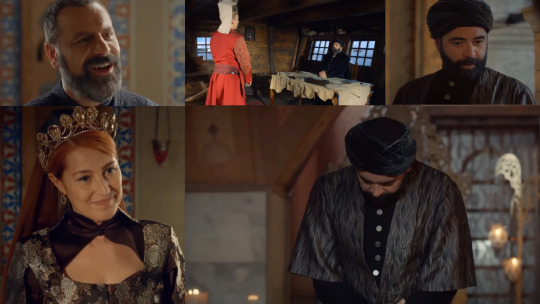
Crossroad
1558 brought great losses and changes to Sokollu. Hürrem Sultan died. Sultan Suleiman had two remaining sons, Selim and Bayezid. Sokollu had not yet openly taken part in the battle of the two princes for the throne, but he had to decide with Hürrem’s death. Sokollu stood openly for Prince Selim, while Rüstem supported Prince Bayezid. Perhaps the decision also had an impact on the relationship between Sokollu and Rüstem. There are several answers to the question of why Sokollu chose Selim. As a prince, Selim had already shown outstanding intelligence and obedience, making him a clearly better candidate. Sultan Suleiman also favored him, true that not openly. Perhaps Sokollu, recognizing Selim’s virtues and knowing Suleiman’s opinion, decided that Selim would be the winning side, so he stood by him? Perhaps he saw that with Selim his own ascension was certain? Maybe he knew that he could easily influence Selim in the future? Either way, he stood beside Selim with his full support.
Suleiman decided to move both of his sons to a more distant province in the same year. He sent Pertev Pasha to Bayezid and Sokollu Pasha to Selim, to tell the princes his instructions. Perhaps Sokollu had just chosen the side of Selim after this meeting. However, after passing the news, Sokollu did not return to Istanbul but remained with Selim. This may have been due to the fact that Prince Bayezid rebelled against his father and openly refused to move out. Eventually, both princes switched provinces, and Sokollu returned to Istanbul. But he couldn’t stay there long.
The battle of the two princes in May 1559 swelled into a civil war. Bayezid revolted against his father and brother after gathering an army with the aim to execute Selim and his only son, Murad. Suleiman then openly chose the side of Selim and sent Sokollu with part of the imperial army to Prince Selim as support. The battle was eventually won by Selim and Sokollu Mehmed, but Bayezid fled away. Sokollu and Selim led their troops after the prince, Suleiman, meanwhile, was waiting in Istanbul for Bayezid to head in that direction. However, the prince fled to Iran, followed by the armies of Selim and Sokollu. Eventually, Bayezid crossed the border and got into the captivity of the Iranian Shah. After realizing that the Shah wants to cooperate, Selim and Sokollu were allowed to leave the Iranian border. Returning to Istanbul and following the death of Rüstem Pasha in 1561, Sokollu earned the post of Second Vizier.
His private life
In 1562, Sultan Suleiman successfully brought back Prince Bayezid from Iran and executed him along with his sons. To strengthen the power of his only heir, Selim, he married Selim’s daughters to influential pashas. One of Selim’s daughters, Esmehan was intended to marry Sokollu Mehmed Pasha. Although there was an age difference of roughly 35-40 years between the couple, according to the descriptions, Sokollu was in good physical condition compared to his age, so perhaps Esmehan was easier to accept her elderly husband. Despite the age difference, their marriage was fruitful. On the one hand, there are plenty of charities and construction projects associated with them, and on the other hand, they have had several children. At least three sons, Sokollu Ahmed (1563? - 1566), Pir-Mehmed (1566? - 1567?), Sokolluzade İbrahim (1565 - 1622?) and a girl Safiye (1563? -?) who later married Lala Mustafa Pasha’s son.
However, Sokollu had to make a sacrifice in order to marry Esmehan Sultan. Sokollu was already married, so he had to divorce his wife first. By the way, not all pashas did this and divorced for the first ask. For example, Kalaylikoz Pasha, a beylerbey of Buda refused to leave his wife when he was offered an imperial princess (funny but he just rejected Sokollu’s widow Esmehan, for the sake of his first wife). However, Sokollu did not leave alone his two sons from his first marriage. He took great care of the education of Hasan and Kurd. We know that Kurd accompanied his father to the battle of Szigetvár in 1566, and this was his first serious fighting experience. From this, we can calculate that, since they were of a roughly similar age, the sons of Sokollu may have been born in the 1540s. Kurd was the beylerbey of Herzegovina between 1571 and 1572, and also dealt extensively with the merchants of Dubrovnik, working closely with them. Not knowing when and how he died. Hasan was the eldest child of Sokollu, and he became the beylerbey of Erzurum, Damascus, Rumelia, Anatolia, and Baghdad during his long career. Interestingly, from the records of an ear-witness, we know what Sokollu’s advice to Hasan was in 1579 when they were preparing to fight against the Safavids. Sokollu then said, “Consider this task as a precondition for your future advancement!” This also suggests that Sokollu did not distribute positions to his relatives for no reason, but he did examine whether they were suitable for the task or not. Hasan was a respected pasha of his age and died in 1598/9 during the war against Çelalis.

At the top
Sokollu Mehmed reached the peak of his political career in 1565 when he was appointed Grand Vizier by Sultan Suleiman. Sokollu then began to make huge arrangements and surrounded himself with his relatives who had previously been brought to and taught in Istanbul. He built himself a network in Suleiman’s life, such a network that Suleiman tried so hard to abolish forty years ago. For Suleiman was content that the statesmen of slave descent, through their relatives and devotees, interwoven all political life, thereby endangering the supremacy of the sultan. Because of this, he sought to bring about several reforms and successfully changed the habit. However, still in the life of the aging sultan, Sokollu had already successfully revived the olf tradition, perhaps without Suleiman noticing.
The old sultan died at Szigetvár in 1566, which put Sokollu in a very difficult situation. The battle had been unsuccessful for too long, the soldiers were exhausted and desperate. Had it turned out the death of the sultan, the order would be disrupted, and not only would the battle have been lost, but perhaps more trouble could have happened. Because of this, Sokollu decided to cover up Suleiman’s death and immediately sent an ambassador in the greatest secret to Prince Selim to come to the camp as soon as possible. To make his plan a success, he fenced off a scribe whose handwriting matched that of Suleiman’s and another man who resembled the sultan. He dressed the latter in the sultan’s clothes and carried him around the camp in the sultan’s carriage; and the former handed out written orders in the name of the sultan. To avoid rot of the body of the sultan, it was mummified by an Egyptian doctor, certainly by Egyptian methods. The battle was finally won, so Sokollu revealed the news of the sultan’s death and showed the body of the sultan who had been dead for several days. A few weeks later, Prince Selim also arrived, who began his reign as Selim II. Suleiman’s body was then shown again and the sultan’s body was reportedly in very good condition, which also supports the Egyptian method of embalming.
After Suleiman’s death, they returned with Selim to Istanbul, where they had to face an awkward incident. Crossing the city border, the Janissaries stopped and refused to continue their way to the palace. In time, they got bored, they started to walk again a little, and soon they stopped again. Then Selim’s son-in-law, Admiral Piyale Pasa, and other viziers also ordered the Janissaries to continue walking, who in response dragged the statesmen off their horses and nearly killed them, eventually spared them only in exchange for gold. Selim was in a very distressing situation, as the Janissaries publicly humiliated him and he could do nothing against it. Thanks to the mediation of Sokollu, the Janissaries finally announced what would change their minds and indicated that they wanted their accession fee immediately. This fee is traditionally distributed by the sultan later, as Selim did not yet have access to the treasury because he could not yet return to the palace. The Janissaries, of course, knew this and deliberately wanted to humiliate the Sultan in this way. Selim eventually cut himself out of the situation by asking his sister, Mihrimah, for financial help. Some say that the situation did not take a more dramatic turn was due to Sokollu’s presence and composure.
Sokollu reached the culmination of his career during Selim’s reign. Selim did not deal with politics, except in a few exceptional cases, and left everything to Sokollu. Sokollu actually worked as a sultan throughout Selim’s eight-year-long reign. It is not known whether Sokollu ruled completely himself or together wit Selim, following the events from the background. Either way, the second half of the 1560s was difficult for the empire because of several rebellions and protracted wars, but Szokollu and/or Selim successfully recovered from these.

His later years
With the death of Selim in 1574, the twilight of Sokollu’s influence also came. Sokollu and Nurbanu Sultan jointly concealed Selim’s death and invited Prince Murad to the capital. Murad arrived in Istanbul with his own men, however in Istanbul, in all important positions, there were Sokollu’s men. Murad wanted to put his own trusted men to these positions, but his hands were tied. Sokollu was so influential and revered that Murad could not make him retire. The problem was finally solved in the spring of 1579. A man dressed in a dervish suit stabbed Sokollu, who died at the scene, during an audition. It is still unclear who the instigator was, but there are more possibilities, including Murad himself, Safiye Sultan, or even Nurbanu Sultan, but also the enemies of Sokollu.
Sokollu Mehmed was buried in Istanbul, in his own complex, built by him in 1572 according to the plans of Mimar Sinan. Sokollu’s career, influence, and personality are unique in the history of the Ottoman Empire and this is why he is still considered as one of the greatest Grand Viziers today. He gave to numerous charities and sponsored many construction projects during his life. His Kadirga Mosque Complex is one of the most beautiful “little mosques” in Istanbul.
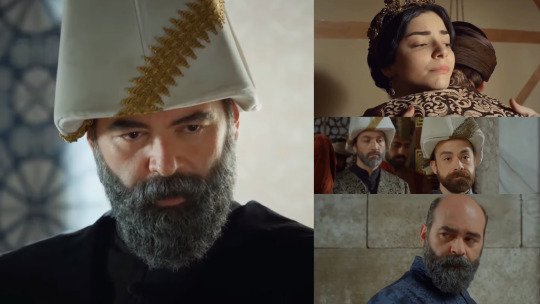
Used sources: U. Dakic - The Sokollu family clan and the politics of vizireial households in the second half of the sixteens century; P. Kayaalp - The Empress Nurbanu and Ottoman Politics in the Sixteenth Century - Building the Atik Valide; Y. Öztuna - Kanuni Sultan Süleyman; S. Faroqhi - The Ottoman Empire and the World around it; C. Imber - The Ottoman Empire 1300-1650; D. A. Howard - A history of the Ottoman Empire; L. Peirce - Empress of the East; L. Peirce - The imperial harem; Pinar Kayaalp-Aktan, The Atik Valide Mosque Complex: A testament of Nurbanu’s prestige, power and piety
* * *
Eredete és neveltetése
Szokollu Mehmed származásához két történet is kapcsolódik. Egyik szerint 1505 körül született egy egyszerű pásztor családba Sokolovići-hoz közel, míg a másik szerint egy gazdag ortodox család leszármazottja, a család harmadik fia volt. Ismerve életét, utóbbi tűnik valószínűbbnek. Abban azonban mindkét történet egyetért, hogy a devsirme rendszeren keresztül került végül gyermekként az Oszmán Birodalomba. Ennek idejéről megoszlanak a vélemények, vagy 1516-ban vagy 1521-ben szakadt el családjától. Amennyiben az utóbbi dátum a valós, feltételezhetjük, hogy az 1505-ös születési idő túlzó és annál később születhetett néhány évvel.
Egy érdekes - és részben talán hitelt is érdemlő - történet szerint a kis Szokollut személyesen választották ki a besorozás során Yeşilce Mehmed Bey emberei. Yeşilce Mehmed Bey nem saját maga ötletétől vezérelve választotta ki a fiút, hanem felettese Deli Hüsrev Pasa kérésére, aki maga is a Szokkollu családból származott. A történet szerint Deli Hüsrev szerette volna kitaníttatni utódját, akin keresztül még nagyobb politikai befolyásra tehet szert. Ez a módszer - az ifjak kitanítása - kifejezetten gyakori volt, sok idősödő pasa választott tehetséges fiatalokat maga mellé, akik felemelkedésével ő maga is előnyökhöz juthatott a későbbiekben. Az pedig, hogy Deli Hüsrev egy rokonát kívánta kinevelni, két dologra is rávilágít: 1/ valódiak lehetnek azok a történetek melyek szerint a devsirme rendszerben valóban olykor olykor személyesen válogattak fiúkat (és lányokat) és felsőbb utasításra vitték őket a Birodaloba; 2/ nem volt ritka, hogy a devsirme rendszeren keresztül felemelkedő államférfiak felkutassák és támogassák családjaikat. Ezutóbbi egyébként felveti annak a kérdését, hogy a szultánák miért nem tettek így, ám ez egy összetettebb téma, melyet egy külön posztban fogok taglalni.
Akárhogyan is, családja hiába kínált hatalmas összegeket az adóbeszedőknek, azok elvitték a kisfiút, aki így az 1520-as években már minden bizonnyal az Oszmán Birodalomban tartózkodott, Deli Hüsrev támogatását élvezve. Deli Hüsrev igen magas körökben mozgott, 1543-ban például Szulejmán szultán második vezíre volt, így megfelelő alapot tudott adni a fiúnak. Szokollu Mehmed azonban nem repesett az örömtől, hogy elszakították családjától, így amint saját politikai köreit kezdte kiépíteni szembefordult Deli Hüsrevvel és nyíltan egymás ellenségei lettek.

Felemelkedés
Szokollu Mehmed első éveit Edirnében töltötte, ahol oktatásban részesült, majd 1534-ben részt vett irak elfoglalásában a defterdár Iskender Çelebi mellett. Iskender Çelebi még ugyanezen évben meghalt, így Szokollu a Topkapi Palota bővítésekor lovászi feladatokat kapott és Isztambulba költözhetett. Érdekesség, hogy Iskender Çelebi halála után Mehmed nem egyedül került Isztambulba, hanem olyan később nagy nevet szerző férfiak társaságában, mint Pertev Pasa, Piyale Pasa (későbbi sógora), Zal Mahmud Pasa (szintén későbbi sógora), Ahmed Pasa, Lala Musztafa Pasa (Bayezid herceg tanítója), Hüseyin Pasa. Közülük Pertev Pasa, Piyale Pasa, Zal Mahmud Pasa, Lala Musztafa Pasa és természetesen Szokollu Mehmed tulajdonképpen egész életüket együtt töltötték hasonló politikai környzetben mozogva, sőt olyan időszak is volt, mikor együtt voltak divan tagok. Akárhogyan is, 1534-es Isztambulba kerülésük után karrierjük innentől egyenesen ívelt felfelé.
Szokollu Mehmed előbb inas, majd fegyverhordozó lett, végül pedig főkóstoló. Összesen 20 évet töltött a belső szolgálattal, ami egyébként minden más magasra ívelő államférfi esetében megfigyelhető. Fegyverhordozó korában lett akkora befolyása, hogy nagybátyja, Deli Hüsrevhez hasonlóan tudjon eljárni és egy adóbeszedő barátja, Ahmed Bég segítségével testvéreit, húgát és unokaöccseit Isztambulba hozatta, apját pedig miután áttért az iszlámra megtette boszniai alpítványainak vezetőjévé. Megjegyzendő, hogy Szokollu Mehmed nem kényszerítette egyik családtagját sem, hogy térjen át az iszlám hitre, több rokona otrodox keresztényként töltött be magas pozíciókat és élvezte Szokollu támogatását. Szokollu egyébként olybá tűnik, nem szakadt el teljesen keresztény gyökereitől, ugyanis később a Balkáni keresztényeket is támogatta.
1541-ben kapta első palotán kívüli feladatát, mikor ő lett a főkapu őr, ami egy igen megbecsült és fontos feladatkör volt. Innen kapta aztán első igazi kinevezését, mellyel belépett a nagybetűs politikai élebe, Hayreddin Barbarossa 1546-os halálát követően érte, mikor Szulejmán szultán kinevezte az oszmán flotta admirálisának. Barbarossa igazi tengeri róka volt, aki minden idejét a tengeren töltötte. Szokollu éles váltás volt a páratlan Barbarossához képest, ugyanis admirálisi pályafutása során végig Isztambulban maradt.
1549-ben Szófiába költözött, mert Rumélia beglerbégjévé nevezték ki. Kinevezése nagymértékben származásának volt köszönhető. Az oszmánok ugyanis nehezen tudták megvetni lábukat a területen, hiszen biztos hátországot akartak itt kiépíteni, ami támogatni képes őket a Magyar Királyság elleni állansuló háború során. Ehhez pedig minél több bosnyák és szerb katonát akartak zászlójuk alá gyűjteni. Úgy gondolták, ez egy befolyásos innen elszármazott pasa segítségével sikerülhet. Szokollu bár a toborzást sikeresen telejsítette, Temesvár elfoglalásával kudarcot vallott. Hasonló bukásért a legtöbb pasát egyszerűen lefokozta korábban a szultán, Szokollut azonban meghagyta pozíciójában. Ennek oka talán Rüsztem Pasával formálódó barátsága volt. Rüsztem és Szokollu mindketten a Balkánról származtak, azonos nyelvet beszéltek, hasonló sorsuk volt, ezért Rüsztem igyekezett támogatni a nála valamivel fiatalabb Szokollut. A tény, hogy Rüsztem idősebb volt Szokollunál szintén azt sugallja, hogy az 1505-ös születési év túlzó Szokollu esetében. Kettejük viszonya rávilágít arra is, hogy milyen nagy összetartás volt az azonos származású államférfiak között. Ezt egyébként több esetből is tudjuk és szinte minden követ megemlíti írásaiban. A háremen belül is hasonló helyzet állhatott fenn.
Szokollu Mehmed Rüsztem mellett Mihrimah és Hürrem támogatását is élvezte. Van egy igen érdekes történet, Szokollu és Hürrem viszonyáról, melyet a velencei követ jegyzet fel. Eszerint Szokollu Mehmed Pasa egyszer elkísérte Hürremet egy hajóútra, azonban a hajó süllyedni kezdett és félő volt, hogy a Haszeki megfullad. Szokollu Mehmed hatalmas fizikai erejének köszönhetően azonban kimentette a Haszekit a vízből. A követ úgy gondolta, ezen incidens állhatott Szokollu felemelkedésének hátterében. A valóság valószínűleg sosem fog kiderülni, azonban ha a történet maga nem is igaz, legalább Szokollu külsejére kapunk utalást a követ leírásából.
Szokollu Mehmednek igen komoly feladattal kellett szembe néznie 1553-ban, a szafavidák elleni harcok során. Mivel a hadjárat Musztafa herceg kivégézését követően, októberben felfüggesztődött, mielőtt igazából elkezdődött volna Szokollunak az iráni határ közelében kellett kitelelnie. Aztán 1554 júniusában a ruméliai hadsereggel megerősítve magát sikeresen elfoglalt több kisebb grúz erődöt, amit a szultán azzal hálált meg neki, hogy harmadik vezírré tette meg. Ezzel pedig Szokollu a diván tagja lehetett, mellyel példátlan emelkedése egyértelműen célirányt vett. Tovább erősítette az, hogy sikerrel volt képes leverni az ál-Musztafa féle lázadást 1555-ben, melyet korábban Bayezid herceg sikertelenül kezelt és amely Szulejmán szultánnak kiemelt jelentőséggel bírt.

Válaszút
1558 több szempontból is nagy veszteségeket hozott Szokollunak és válaszút elé is került. Hürrem szultána meghalt. Szulejmán szultánnak két fia maradt, Szelim és Bayezid. Szokollu Mehmed eddig nyíltan nem vett részt a két herceg trónért folyó harcába, azonban Hürrem halálával döntenie kellett. Szokollu Mehmed nyíltan Szelim herceg mellé állt, míg Rüsztem Pasa Bayezidet támogatta. Talán a döntés Szokollu és Rüsztem viszonyára is ráhatással volt. Arra a kérdésre, hogy Szokollu miért Szelimet választotta több válasz is létezik. Szelim hercegként kiemelkedő intelligenciáról és engedelmességről tett már tanúbizonyságot, emiatt egyértelműen jobb jelölt volt. Emellett Szulejmán szultán is őt favorizálta, ha nem is nyíltan. Talán Szokollu felismerve Szelim erényeit és tudva Szulejmán véleményét úgy döntött, hogy Szelimé lesz a győztes oldal, így mellé állt? Talán látta Szelimen, hogy mellette a saját felemelkedése is biztos? Talán tudta, hogy Szelimet könnyen fogja tudni befolyásolni a későbbiekben? Akárhogyan is, teljes mellszélességgel Szelim mellé állt.
Szulejmán úgy döntött, hogy mind a két fiát távolabbi tartományba helyezi át, ezzel jelezve nekik, hogy ne harcoljanak a trónért, amíg ő életben van. A hírt követekkel üzente meg fiainak. Bayezidhez Pertev Pasát küldte, Szelimhez pedig Szokollut. Szulejmán talán tudta, hogy Szokollu Szelimet támogatja és ezért küldte őt, talán Szokollu épp a találkozás alkalmával választott oldalt. Szokollu a hír átadása után azonban nem tért vissza Isztambulba, hanem Szelim mellett maradt. Ennek oka talán az lehetett, hogy Bayezid herceg fellázadt apja ellen és nyíltan elutasította a költözést. Végül mindkét herceg tartományt váltott, Szokollu pedig visszatért Isztambulba. Ám nem sokáig maradhatott ott.
A két herceg harca 1559 májusában polgárháborúvá duzzadt. Bayezid fellázadva apja és bátyja ellen sereget gyűjtött, hogy kivégezze Szelimet és egyetlen fiát, Muradot. Szulejmán ekkor nyíltan oldalt választott és Szokollu Mehmedet a birodalmi sereg egy részével Szelim herceghez küldte támogatásul. A csatát végül Szelim és Szokollu Mehmed nyerték meg, ám Bayezid elmenekült, így csapataik élén a herceg után eredtek. Szulejmán eközben Isztambulban várakozott, ha Bayezid arra venné az irányt. A herceg azonban Irán felé menekült, Szelim és Szokollu seregével a nyomában. Végül Bayezid a határon átkelve az iráni şah fogságába esett, Szelim és Szokollu pedig elhagyhatták az iráni határt, amint a şah jelezte, hogy kész együttműködni a szultánnal és tárgyalásokat kezdtek. Isztambulba visszatérve és Rüsztem Pasa 1561-es halálát követően, Szokollu kiérdemelte a második vezír tisztségét.
Magánélete
1562-ben Szulejmán szultán sikeresen visszaszerezte Bayezid herceget Iránból és fiaival együtt kivégeztette. Hogy megerősítse egyetlen örököse, Szelim hatalmát, Szelim lányait befolyásos pasákhoz adta nőül. Szelim egyik lányát Esmehant Szokollu Mehmed Pasának szánták feleségül. Bár a pár között nagyjából 35-40 év körkülönbség volt, a leírások alapján Szokollu korához képest jó fizikai állapotban volt, így talán Esmehan könnyebben fogadta idős férjét. A körkülönbség ellenére házasságuk gyümölcsöző volt. Egyrészt rengeteg jótékonysági szervezet és építési projekt köthető a pár nevéhez, másrészt pedig több gyermekük is született. Legalább három fiú, Sokollu Ahmed (1563? - 1566), Pir-Mehmed (1566? - 1567?), Sokolluzade İbrahim (1565 - 1622?) és egy lány Safiye (1563? - ?), aki a felnőttkort megérve megházasodott Lala Mustafa Pasa, nagyvezír fiához nőül menve.
Azonban Szokollu Mehmednek áldozatot kellett hoznia ahhoz, hogy elvehesse Esmehan szultánát. A Pasa ugyanis már nős volt, így el kellett válnia feleségétől. Ezt egyébként nem minden pasa tette meg. Ismert például Kalaylikoz Pasa, budai beglerbég, aki elutasította, hogy elhagyja feleségét, mikor felajánlottak neki egy birodalmi hercegnőt (vicces, de épp Szokollu özvegyét utasította el felesége kedvéért). Szokollu azonban elvált feleségétől, első házasságából született két fiát, Hasant és Kurdot azonban nem hagyta magára és gondosan odafigyelt fiai neveltetésére. Kurdról tudjuk, hogy apját elkísérte az 1566-os szigetvári harcba, és ez volt első komoly harci tapasztalata. Ebből arra következtethetünk, hogy - mivel nagyjából hasonló korúak voltak - az 1540-es években születhettek Szokollu fiai. Kurd Herzegovina beglerbégje volt 1571 és 1572 között, emellett kiemelten foglalkozott a dobrovniki kereskedőkkel, szorosan együttműködve velük. Nem tudni, hogy mikor és hogyan halt meg. Hasan volt Szokollu legidősebb gyermeke, Erzurum, Damaszkusz, Rumélia, Anatólia és Bagdad beglerbégje is volt hosszas pályafutása során. Érdekesség, hogy egy fültanú feljegyzéseiből tudhatjuk, hogy mi volt Szokollu Mehmed tanácsa Hasan fiához 1579-ben, mikor együtt készültek harcba szállni a szafavidák ellen. Szokollu ekkor ezt mondta: “Tekintsd úgy ezt a feladatot, mint előfeltételét a jövendő előmenetelednek!” Ez arra is utal, hogy Szokollu nem osztogatta rokonainak minden ok nélkül a pozíciókat, hanem igenis vizsgálta, hogy alkalmasak e a feladatra. Még saját fiát is vizsgáztatta. Hasan elismert pasája volt korának és 1598/9-ben hunyt el a Çelalik elleni harcok során.

A csúcson
Szokollu Mehmed a politikai pályájának csúcsát 1565-ben érte el, mikor Szulejmán szultán kinevezte nagyvezírré. Szokollu ekkor nagy rendezkedésbe kezdett és korábban Iszambulba hozatott és taníttatott rokonaival vette körbe magát. Olyan hálózatot épített ki magának Szulejmán életében, melyet Szulejmán negyven évvel ezelőtt olyannyira igyekezett eltörölni. Szulejmán ugyanis megelégelte, hogy a rabszolga származású államférfiak rokonaik és lekötelezettjeik révén átszövik az egész politikai életet, veszélyeztetve ezzel a szultán felsőbbrendűségét. Emiatt több reformot is igyekezett hozni, és sikerrel változtatta meg a szokást. Azonban Szokollu az idősödő szultán életében már sikerrel felélesztette a hagyományt, talán anélkül, hogy Szulejmán észrevehette volna.
Az idős szultán 1566-ban Szigetvárnál elhunyt, mellyel igen nehéz helyzetbe hozta Szokollut. A csata túl régóta zajlott eredménytelenül, a katonák kimerültek és reményvesztettek voltak. Ha kiderült volna a szultán halála megbomlott volna a rend és nem csak, hogy a csatát vesztették volna el, de talán nagyobb baj is történhetett volna. Emiatt Szokollu úgy döntött, hogy eltitkolja Szulejmán halálát és azonnal követet küldött a legnagyobb titokban Szelim herceghez, hogy mielőbb jöjjön a táborba. Hogy terve sikerrel járjon kerített egy írnokot, akinek kézírása megegyezett Szulejmánéval és egy másik férfit, aki hasonlított a szultánra. Utóbbit beöltöztette a szultán ruháiba és a szultáni kocsival körbe vitette a táborban, hogy a kocsi látványával lelket öntsön a katonákba; előbbi pedig írásos parancsokat osztogatott a szultán nevében. Hogy a test rothadását elkerülje, a szultán testét egy egyiptomi orvos mumifikálta, minden bizonnyal az egyiptomi módszerekkel. A csatát végül megnyerték, így Szokollu felfedte a szultán halálhírét és a több napja halott szultán testét felravataloztatta. Néhány hét múlva Szelim herceg is megérkezett, aki ekkor szultánná lépett elő és megkezdte uralmát II. Szelim néven. Szulejmán testét ekkor újra felravatalozták és a beszámolók szerint a szultán teste nagyon jó állapotban volt, ami szintén alátámasztja az egyiptomi balzsamozási módszert.
Szulejmán halála után együtt tértek vissza Szelimmel Isztambulba, ahol kínos incidenssel kellett szembe nézniük. Ekkor ugyanis a város határát átlépve a janicsárok egyszerűen megálltak és elutasították, hogy tovább haladjanak a palota felé. Idővel megunták, kicsit újra elindultak majd hamarosan ismételten lecövekeltek. Ekkor Szelim veje, a tengernagy Piyale Pasa és többi vezíre is parancsot adott a janicsároknak a tovább indulásra, akik válaszul lerántották lovaikról az államférfiakat és végül csak pénzért cserébe kímélték meg őket. Szelim nagyon szorult helyzetbe került, hiszen a janicsárok nyilvánosan alázták őt meg, és nem tehetett semmit ellene. Szokollu Mehmed közbenjárásának köszönhetően végül a janicsárok közölték, hogy mi változtatná meg véleményüket és jelezték, hogy a trónralépési jussukat akarják azonnal. Ezt a jusst a szultán a hagyományok szerint később osztja ki, hiszen Szelimnek még nem volt hozzáférése a kincstárhoz, mert még nem tudott visszajutni a palotába. A janicsárok természetesen ezt tudták és szándékosan akarták így megalázni a szultánt. Szelim végül kivágta magát a helyzetből azzal, hogy nővérétől, Mihrimahtól kért anyagi segítséget. Egyesek szerint az, hogy a helyzet nem vett drámaibb fordulatot Szokollu jelenlétének és higgadtságának volt köszönhető.
Szokollu pályájának csúcsát Szelim uralkodása alatt érte el. Szelim ugyanis néhány kivételes esetet leszámítva nem foglalkozott a politikával és mindent Szokollura hagyott. Szokollu tulajdonképpen szultánként tevékenykedett, végig Szelim nyolc éves uralkodása alatt. Nem tudni, hogy Szokollu teljesen maga uralkodott vagy Szelim a háttérből nyomon követte az eseményeket. Akárhogyan is, az 1560-as évek másdik felét több lázadás, elhúzódó háború tette nehézzé a birodalom számára, ám Szokollu és/vagy Szelim sikeresen kilábaltak ezekből.

Élete alkonya
Szelim 1574-es halálával Szokollu befolyásának alkonya is elérkezett. Szokollu és Nurbanu közösen titkolták el Szelim halálát és hívták Murad herceget a fővárosba. Murad saját embereivel érkezett Isztambulba. Isztambulban minden fontos pozícióban Szokollu emberei voltak, Murad pedig szerette volna saját évek óta ismert embereit maga körül tudni, ám keze meg volt kötve. Szokollu akkora befolyással bírt, és olyan tisztelet övezte, hogy Murad nem nyugdíjazhatta, nem mozdíthatta el. A probléma végül 1579 tavaszán megoldódott. Egy dervis ruhába öltözött férfi egy meghallgatás során leszúrta Szokollut, aki a helyszínen elhunyt. Máig tisztázatlan, hogy ki volt a felbújtó, többek között felmerült maga Murad is, Safiye szultána, de Szokollu ellenségei is.
Szokollu Mehmedet Isztambulban, saját komplexumában helyezték örök nyugalomra, melyet Mimar Sinan tervei alapján építtetett a pasa 1572-ben. Szokollu Mehmed karrierje, befolyása és személyisége egyedülálló az Oszmán Birodalom történetében és máig az egyik legnagyobb nagyvezírként tartják számon. Élete során rengeteget jótékonykodott és sok építkezési projektet szponzorált. Kadirgai mecset komplexuma az egyik legszebb Isztambuli “kis mecset”.

Felhasznált források: U. Dakic - The Sokollu family clan and the politics of vizireial households in the second half of the sixteens century; P. Kayaalp - The Empress Nurbanu and Ottoman Politics in the Sixteenth Century - Building the Atik Valide; Y. Öztuna - Kanuni Sultan Süleyman; S. Faroqhi - The Ottoman Empire and the World around it; C. Imber - The Ottoman Empire 1300-1650; D. A. Howard - A history of the Ottoman Empire; L. Peirce - Empress of the East; L. Peirce - The imperial harem; Pinar Kayaalp-Aktan, The Atik Valide Mosque Complex: A testament of Nurbanu’s prestige, power and piety
13 notes
·
View notes
Text
Underrated Korean Dramas (2019-2020 edition)


(This post may or may not contain spoilers.)
Chocolate | JTBC | 2019-2020
Rate: 9/10
- I watched this because of the main cast but I ended up loving it. I loved their take on healing and overcoming painful past. The casts were great. And the “inside stories” were tackled deeply and beautifully.
Arthdal Chronicles | TvN | 2019
Rate: 10/10
- I watched this because of the cast but I got hooked immediately. If I’m not mistaken, TvN was the first to take on this kind of genre and they did a great job. The actors, setting, the plot, the dialogues, everything is TOP TIER.
Kill It | OCN | 2019
Rate: 9/10
- The usual OCN thriller but the execution was great. I liked the intriguing back story and the consistency of the main leads’ character. The chemistry was also great even if there were no romantic scenes. And I loved the ending even if it made me cry.
The Lies Within | OCN | 2019
Rate: 8/10
- It’s literally, THE LIES WITHIN. The lines/casts/acting were good. I loved the conspiracy plot of the drama. Although, the ending was somehow predictable, I still liked how they executed it.
The Watcher | OCN | 2019
Rate: 8.5/10
- I love how they can make the scene and plot look predictable but still intriguing. Also, the characters were strong and bold. They all have strengths and weaknesses. And you will definitely love their give-and-take, trust-and-distrust relationship.
Tell Me What You Saw | OCN | 2020
Rate: 9/10
- What I loved most was the strong character arc of the drama. The connection of the characters was also interesting and intriguing. I also love how they were not afraid to kill off characters if necessary. And the villain was undeniably smart.
Team Bulldog: Off Duty Investigation | OCN | 2020
Rate: 9/10
- This drama had a different take on solving crimes. I enjoyed its whole run because of the intense scenes that were accompanied by funny scenes.
Nobody Knows | KBS | 2020
Rate: 8/10
- The main protagonist and the supporting actors were adept. The villain was predictable but he was undeniably great in portraying his character. The back story was somehow expected but the way they delivered it gave me chills.
When The Weather Is Fine | JTBC | 2020
Rate: 8.5/10
- Light drama. This doesn’t have a heavy plot but you’ll definitely learn a lot from it. What I loved most were the “book gathering/club” and Eun Seob’s blog posts. I liked the healing touch and warm feeling this drama offered.
Be Melodramatic | JTBC | 2019
Rate: 9.5/10
- Light drama but with impact. If you liked Reply series and Age of Youth, you’ll probably like this too. Their take on friendship/family/career/mental health/goals/dreams/determination and etc. is definitely a must watch in this drama.
Stove League | SBS | 2020
Rate: 9.5/10
-This is probably underrated in international broadcast only. But to those who haven’t watched this, you should start watching it. There were no romantic scenes but you always look forward for the next episodes. Even if you’re not a fan of sports, you’ll still love Stove League. The consistency and strong-willed character of the main leads were one of the reasons why I enjoyed this drama.
When My Love Blooms | TvN | 2020
Rate: 7/10
- There were dull and boring scenes. But what kept me going was the back story. I fell in love with their love story when they were still college students. I also love how the female lead has brave and bold yet soft character.
Romance Is A Bonus Book | TvN | 2019
Rate: 8.5/10
- If you’re a sucker for “noona tropes”, this drama is for you. Lee Jong Suk’s role here was a fresh breath of air. It also reminded me of his drama “I Can Hear Your Voice". This is a light and refreshing drama. I also loved their take on “mature relationships”.
193 notes
·
View notes










